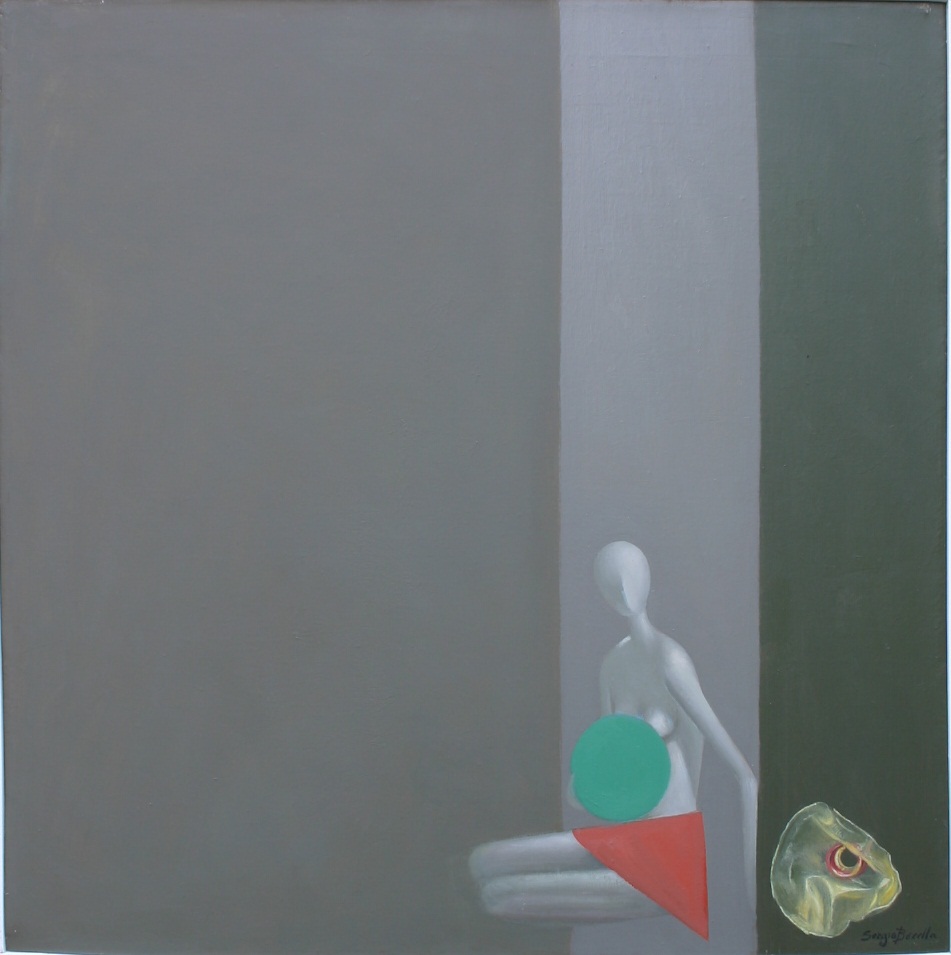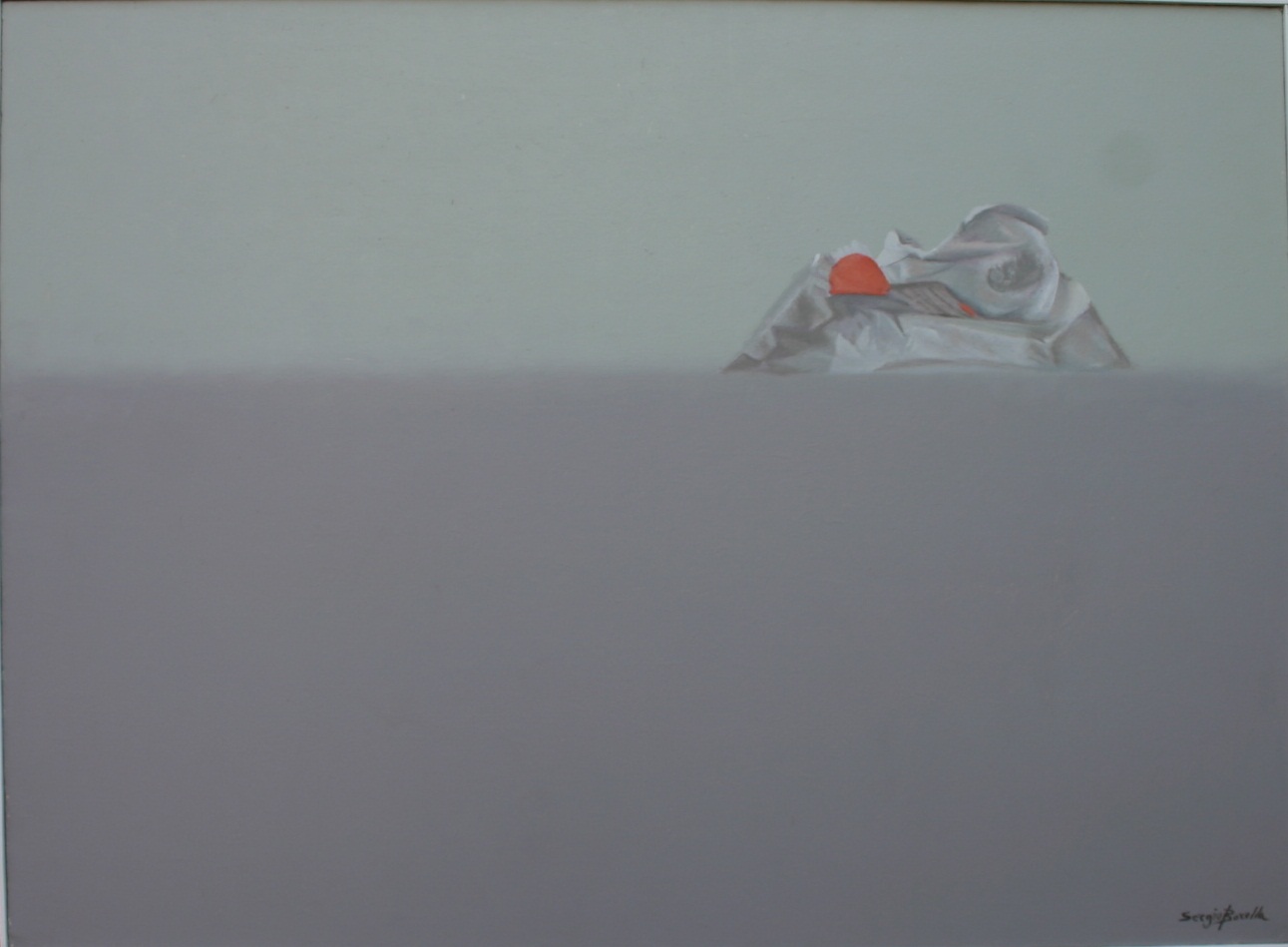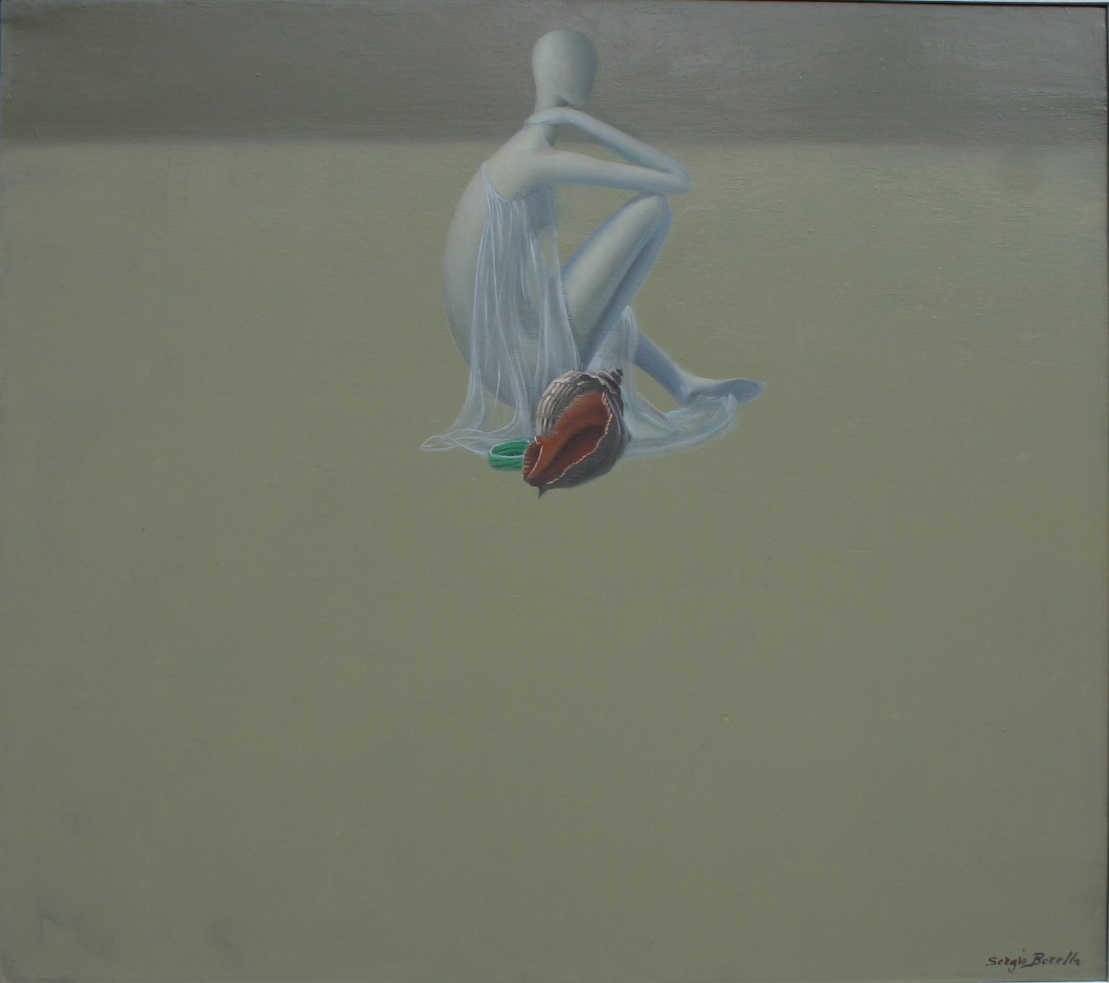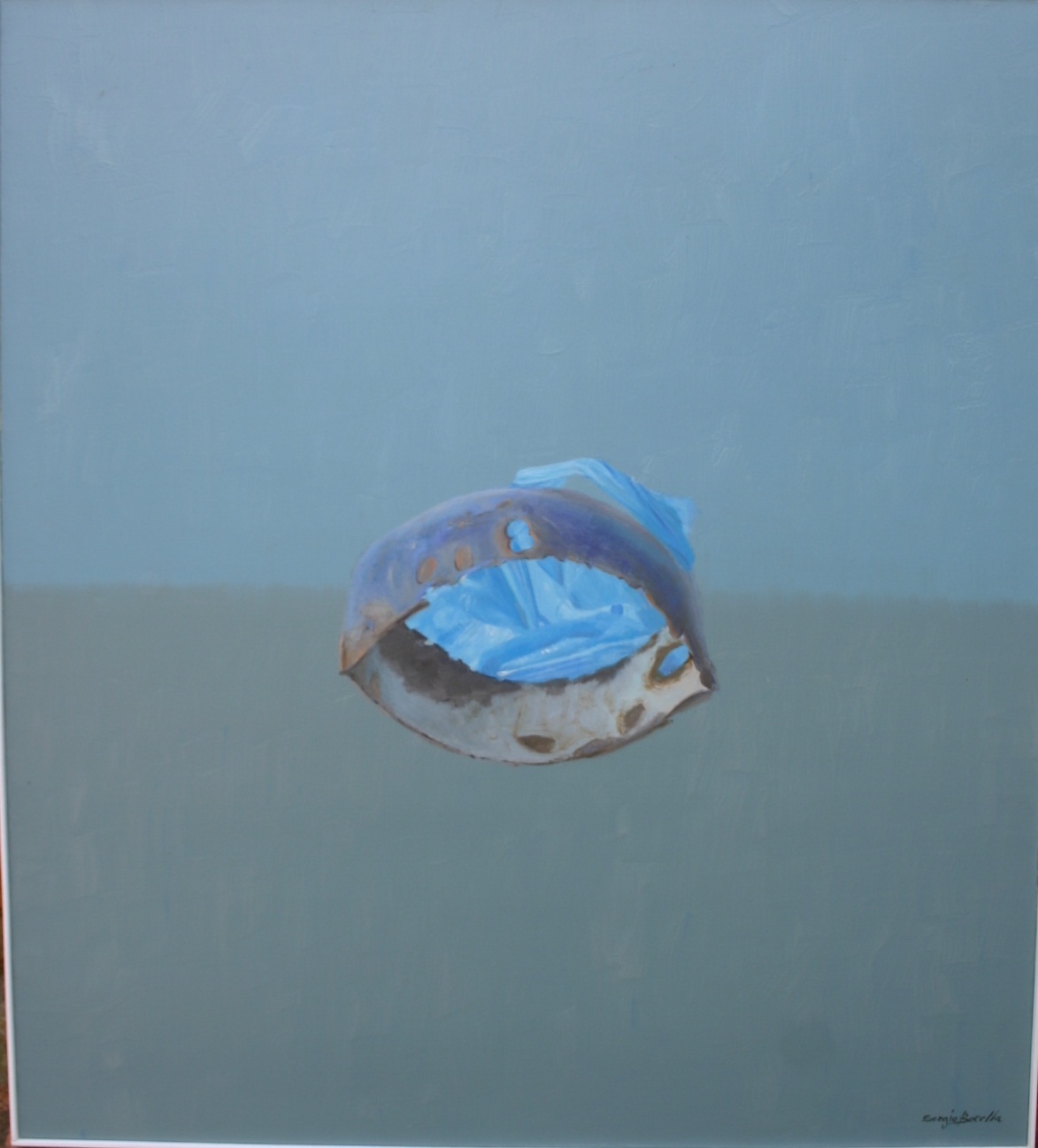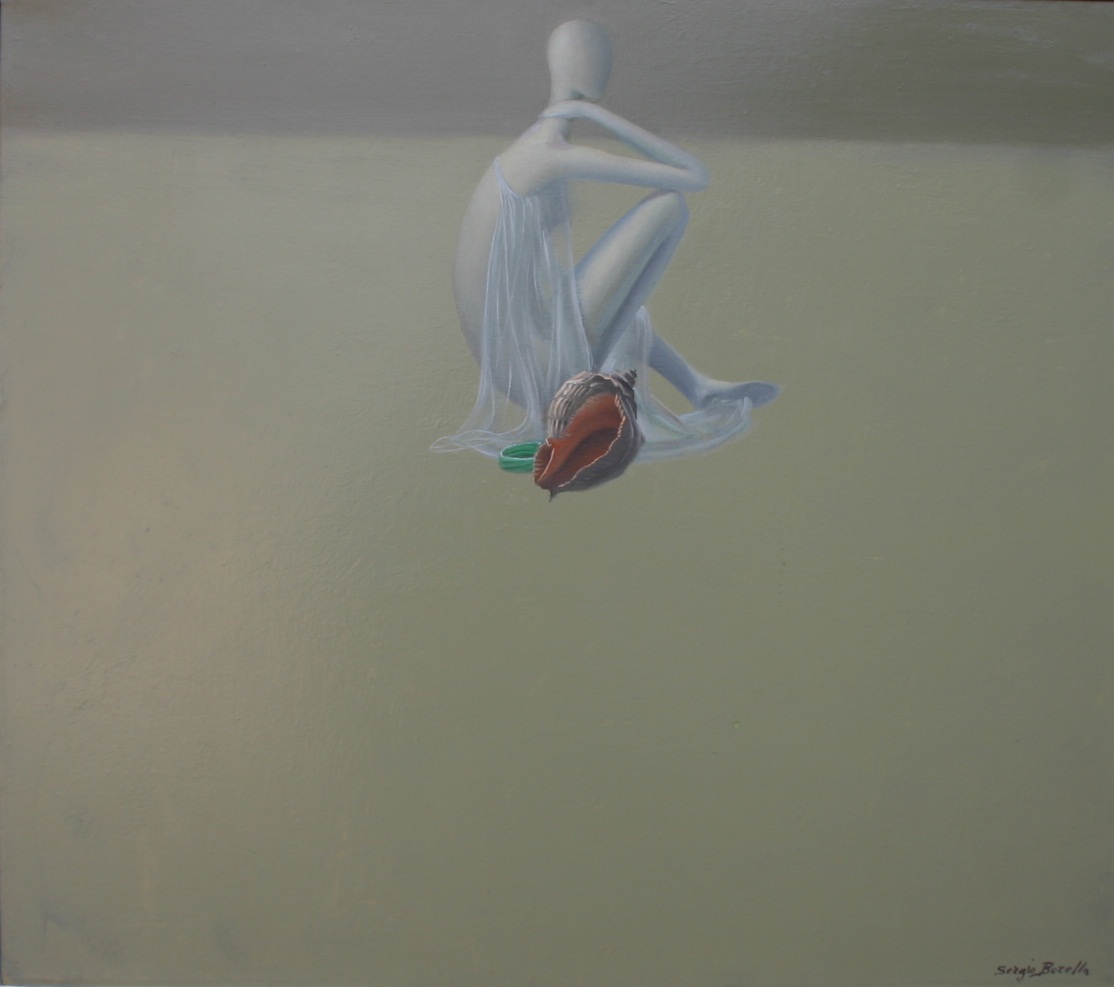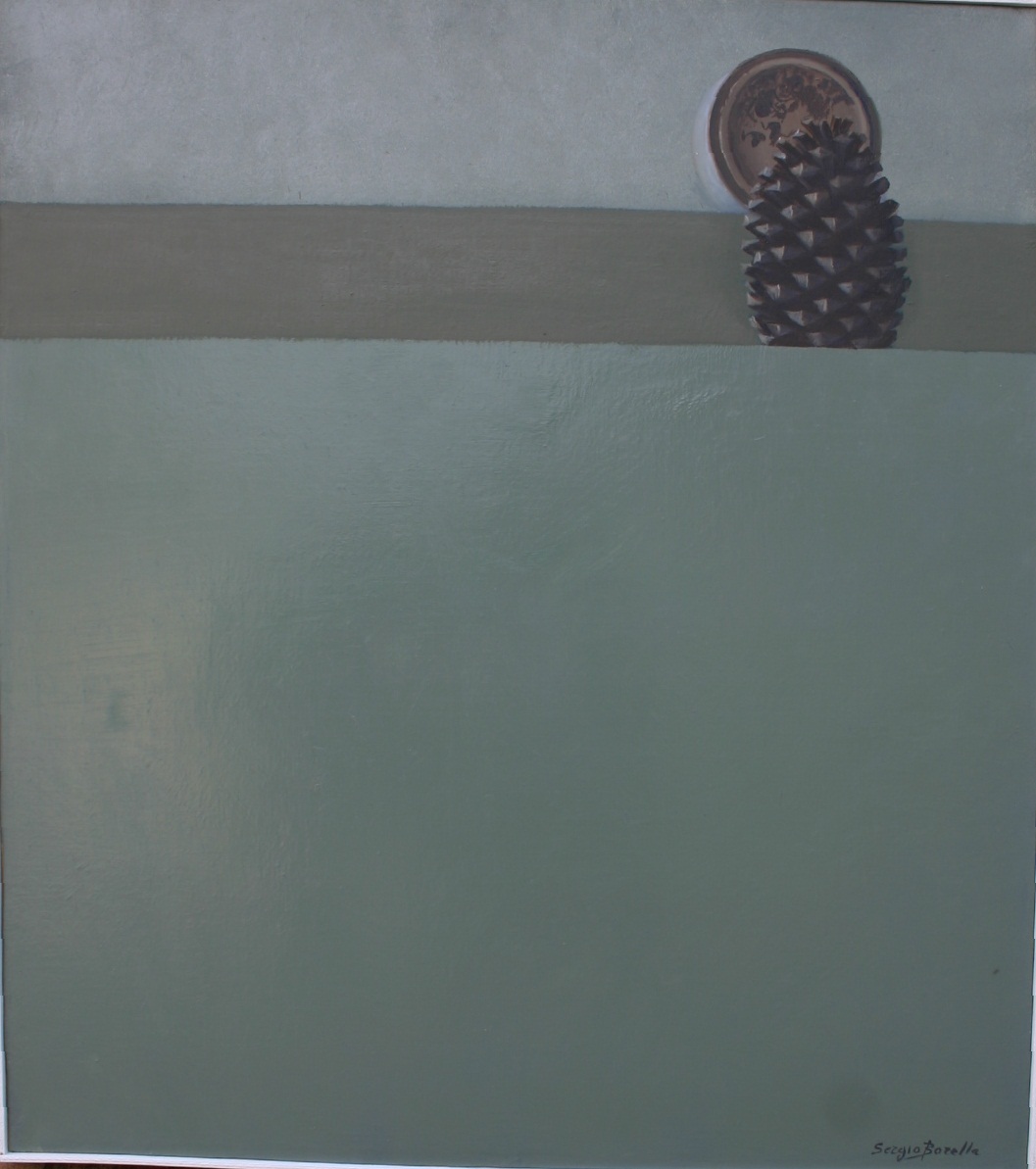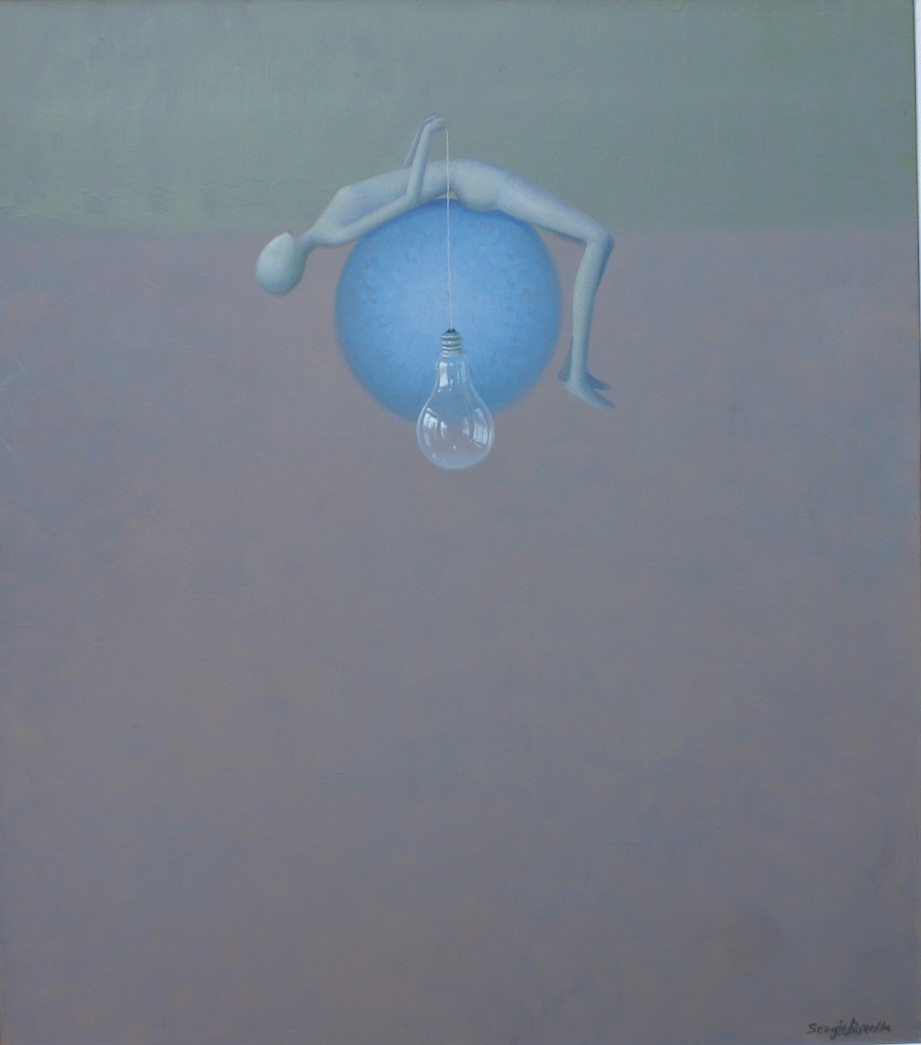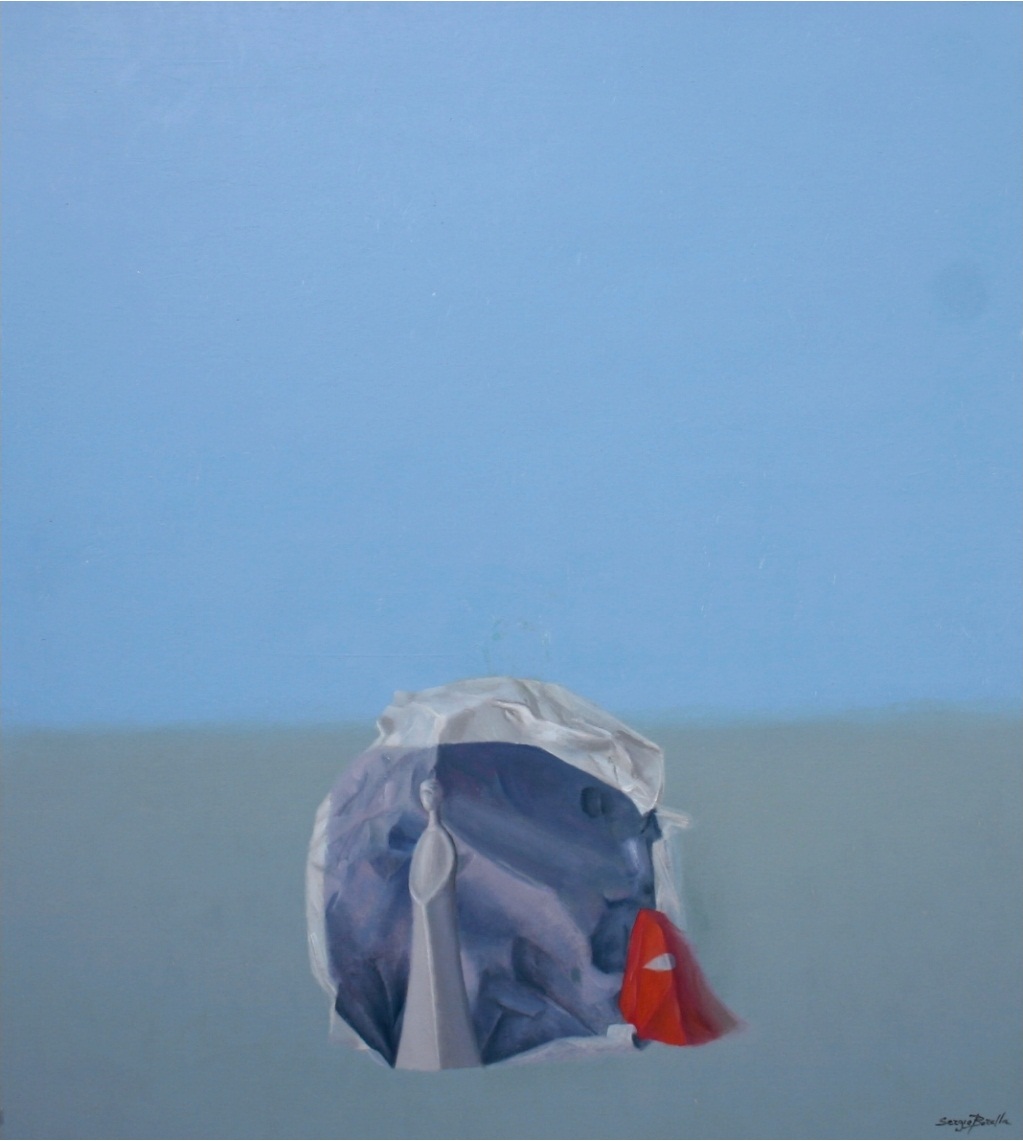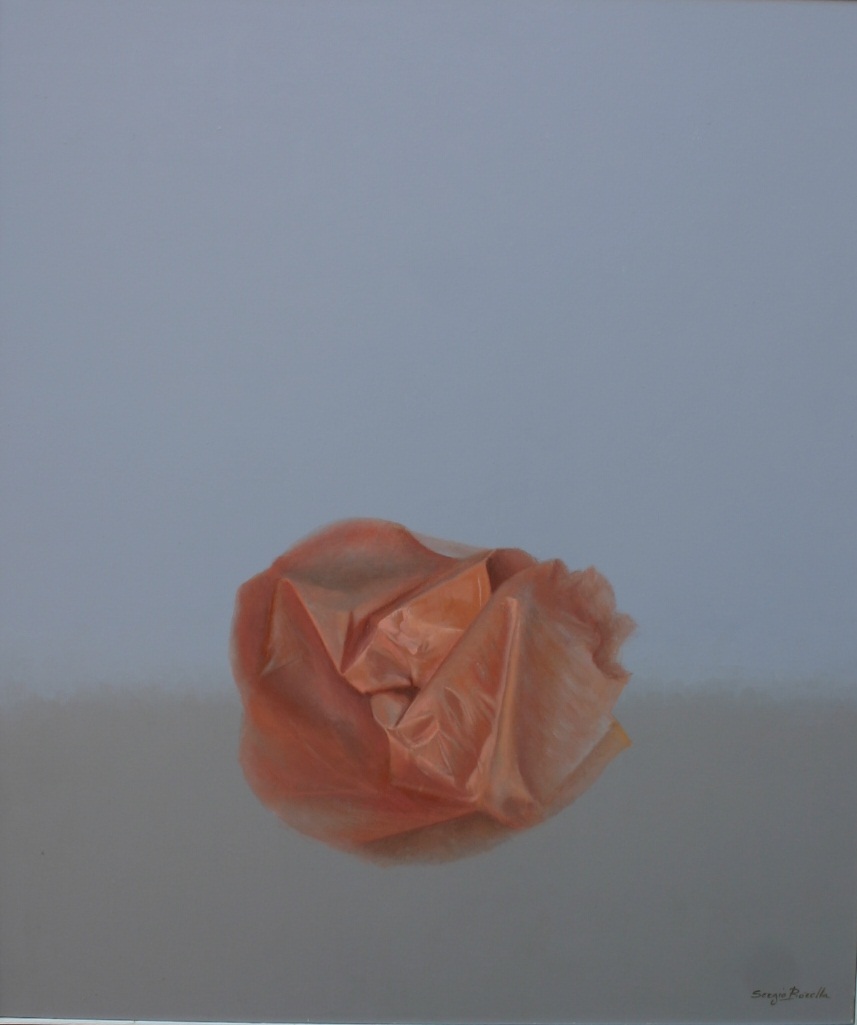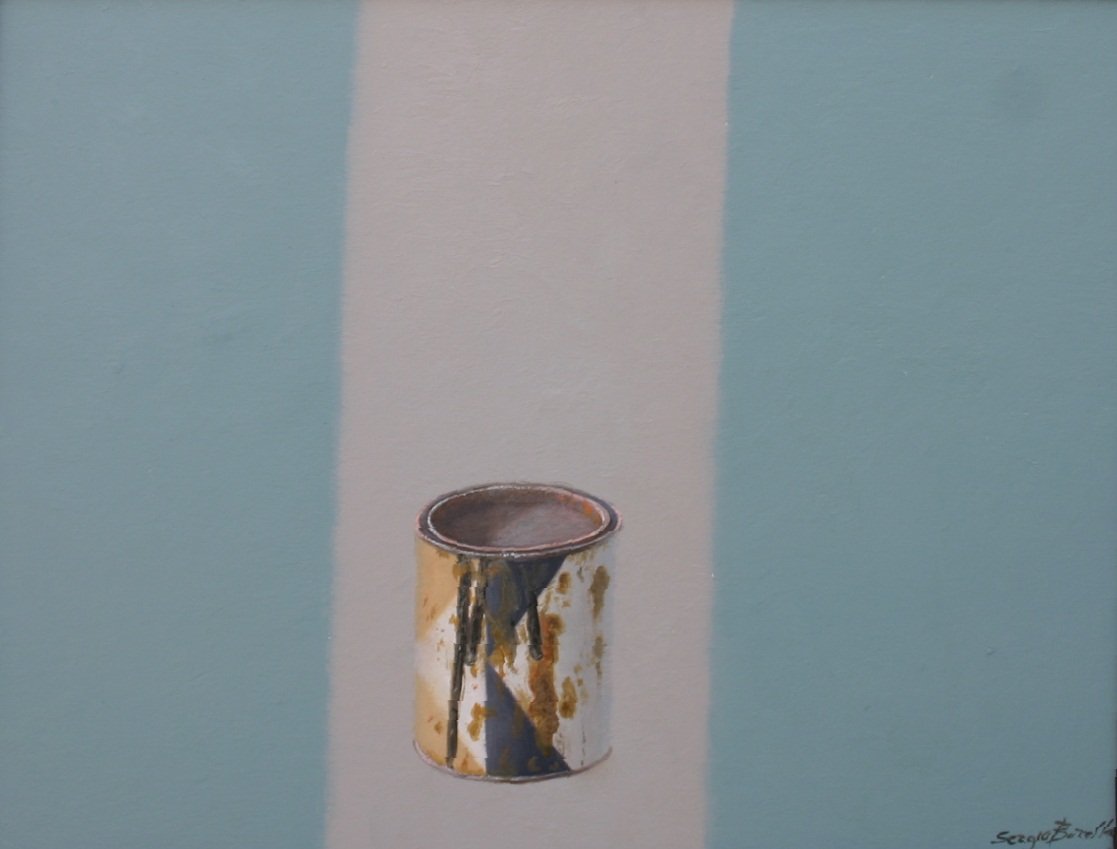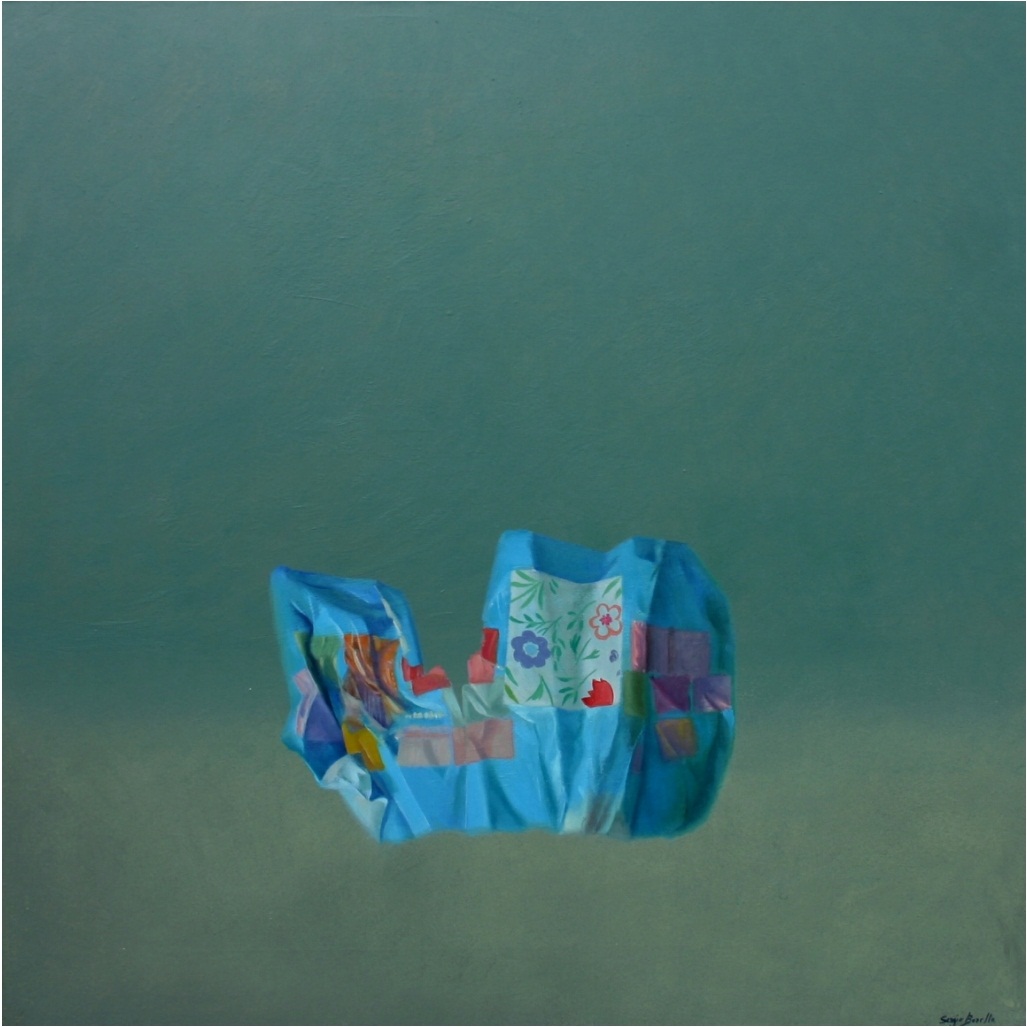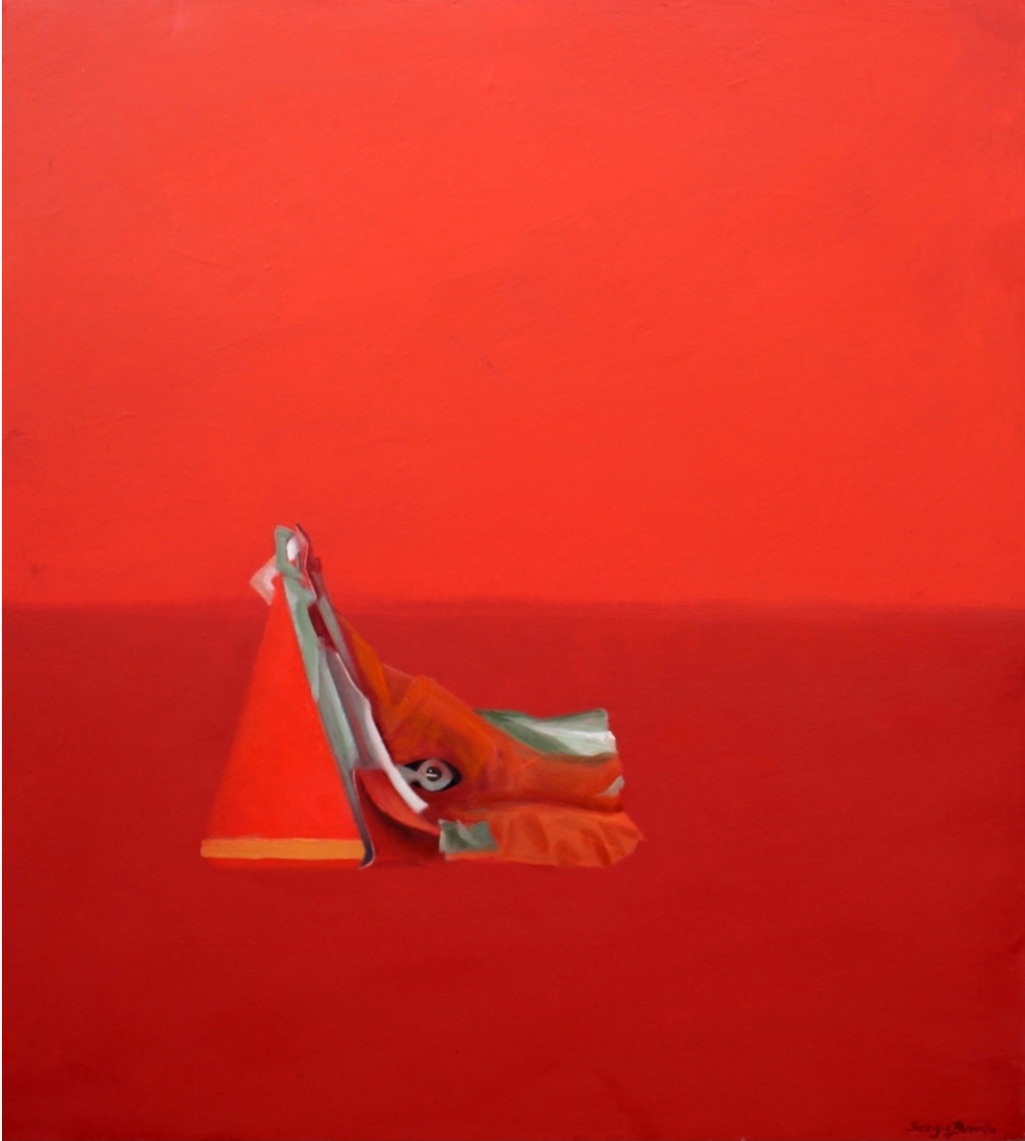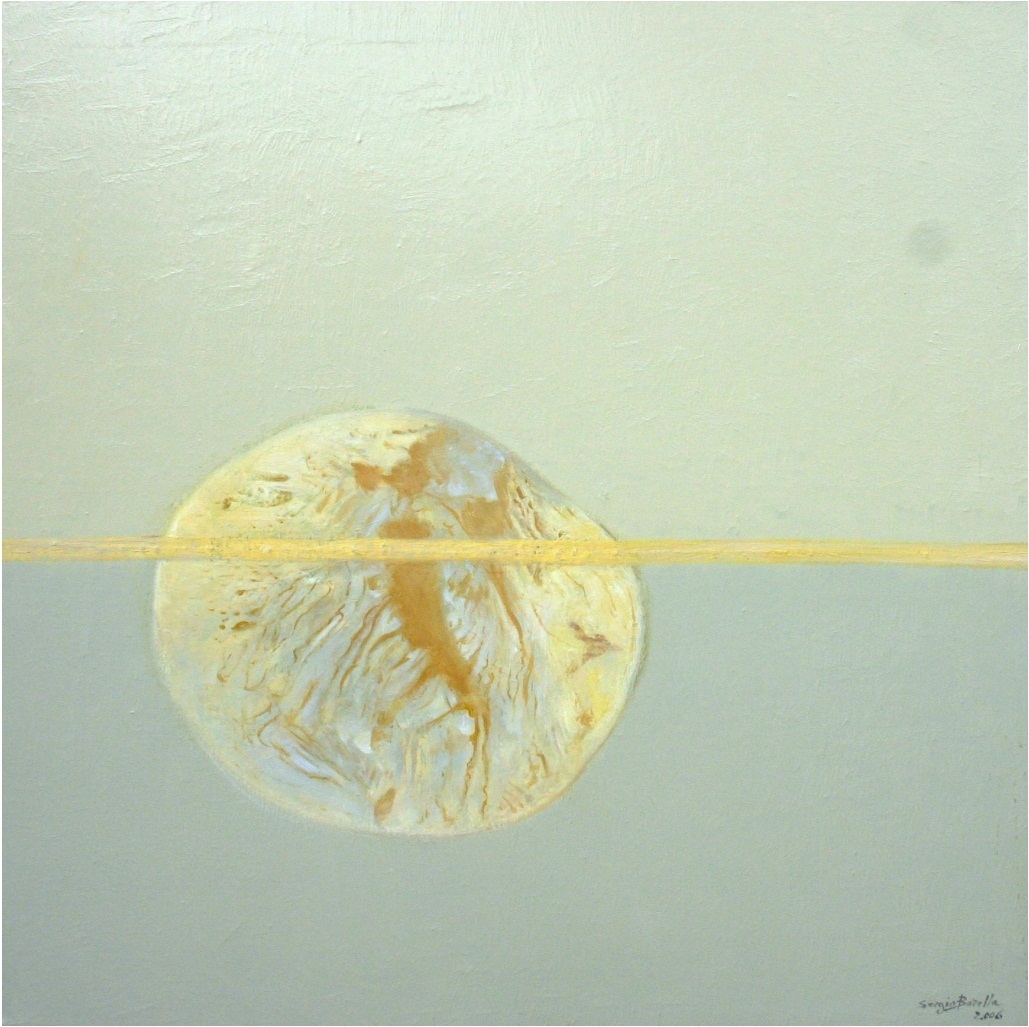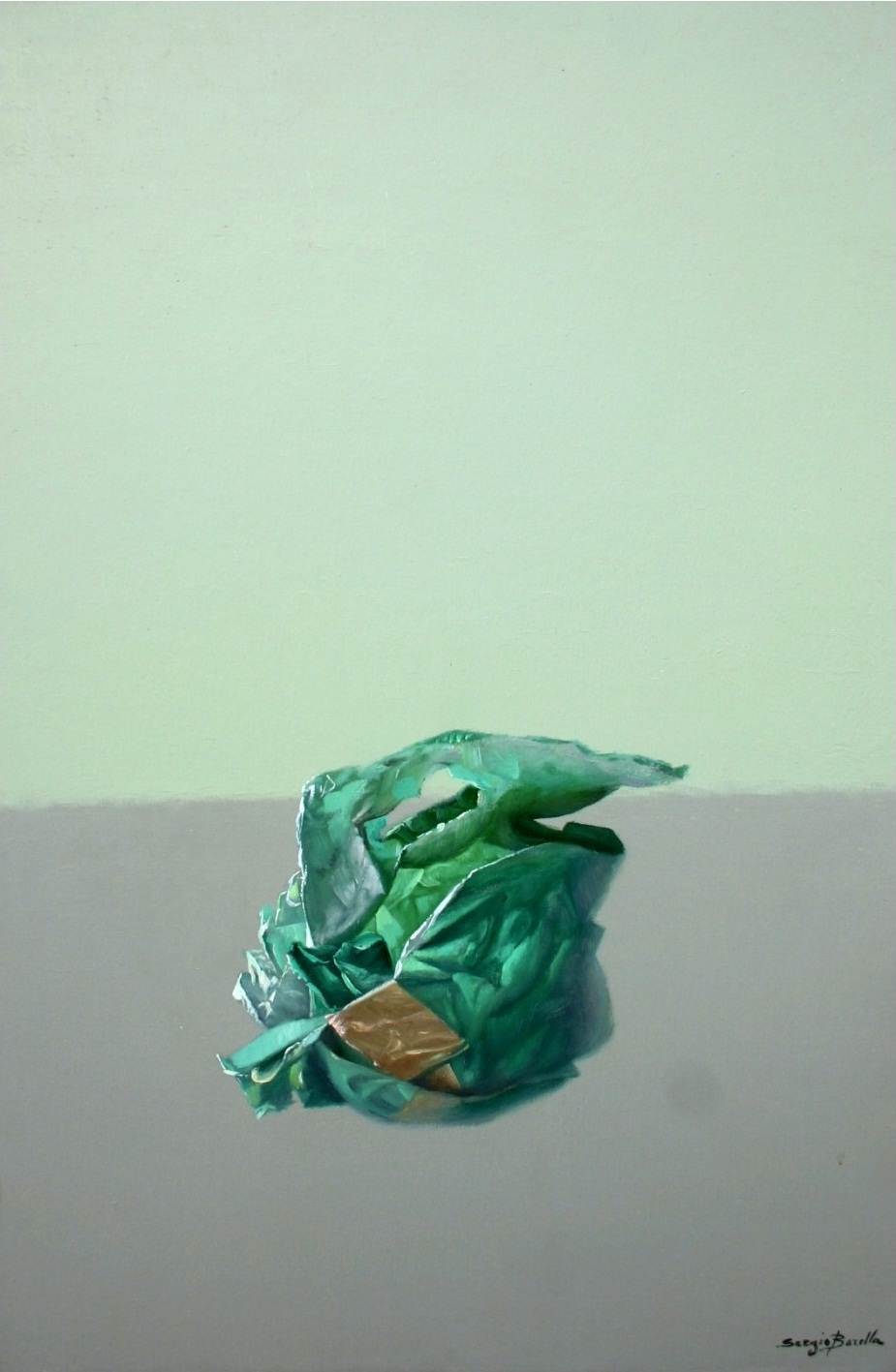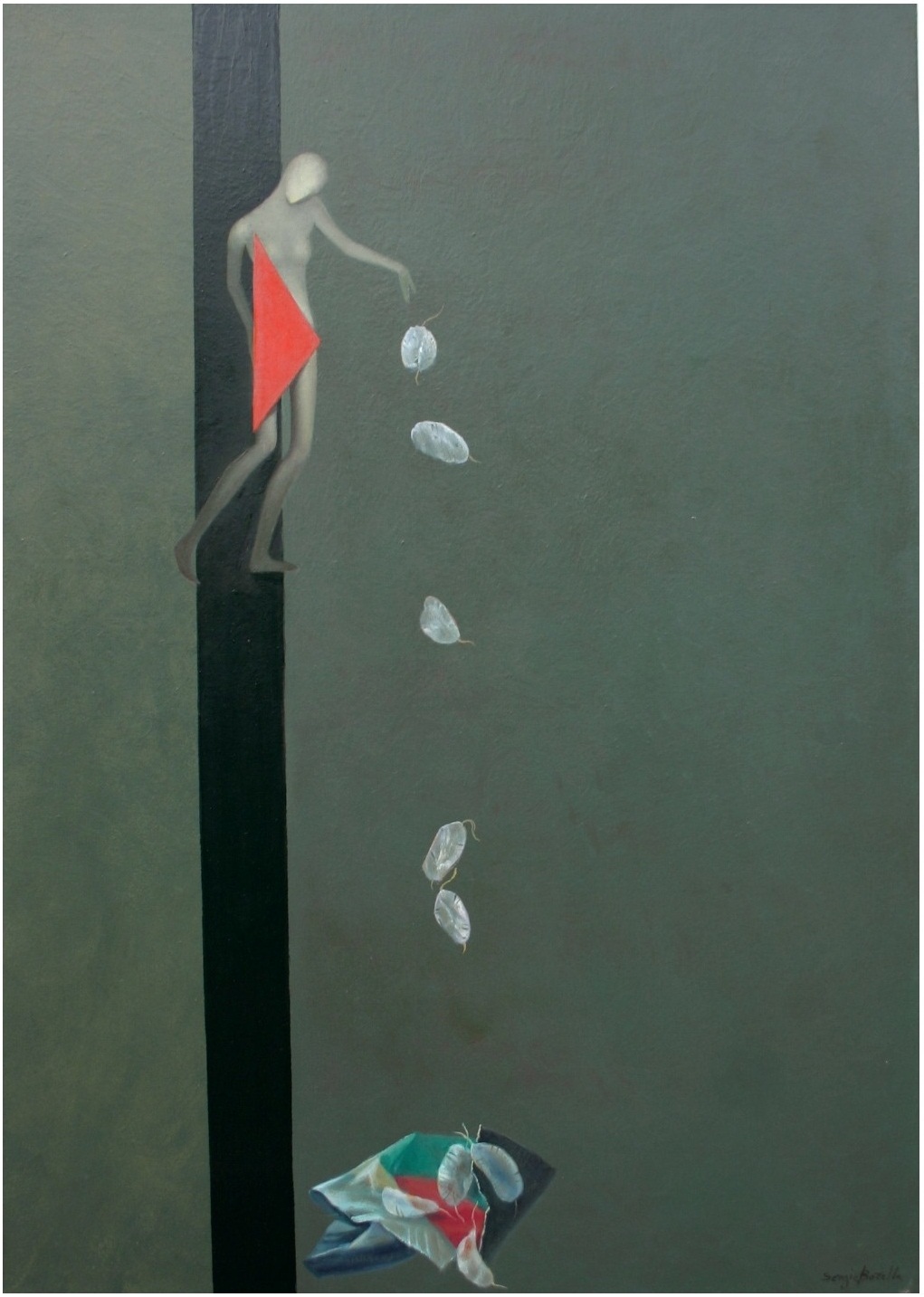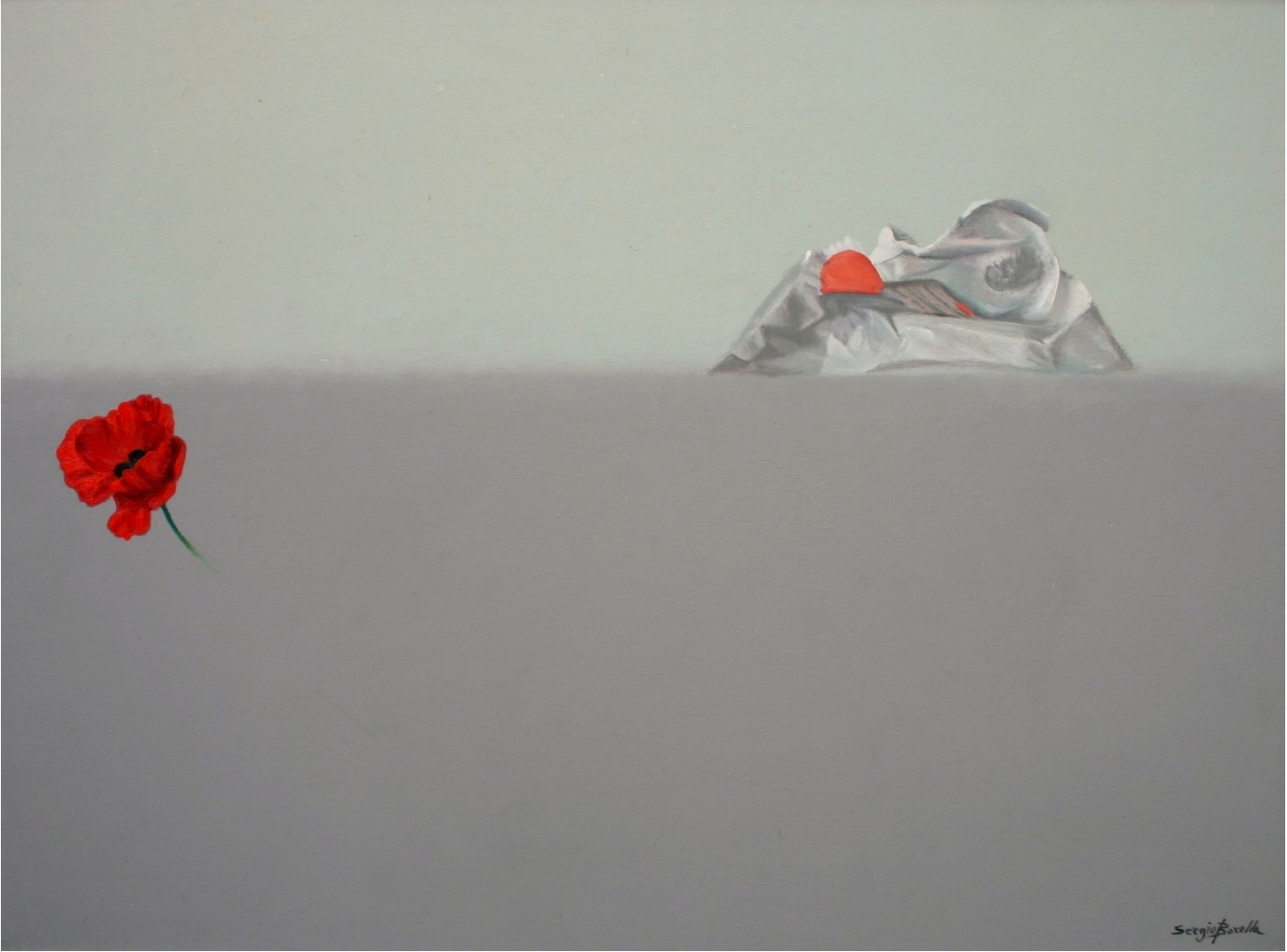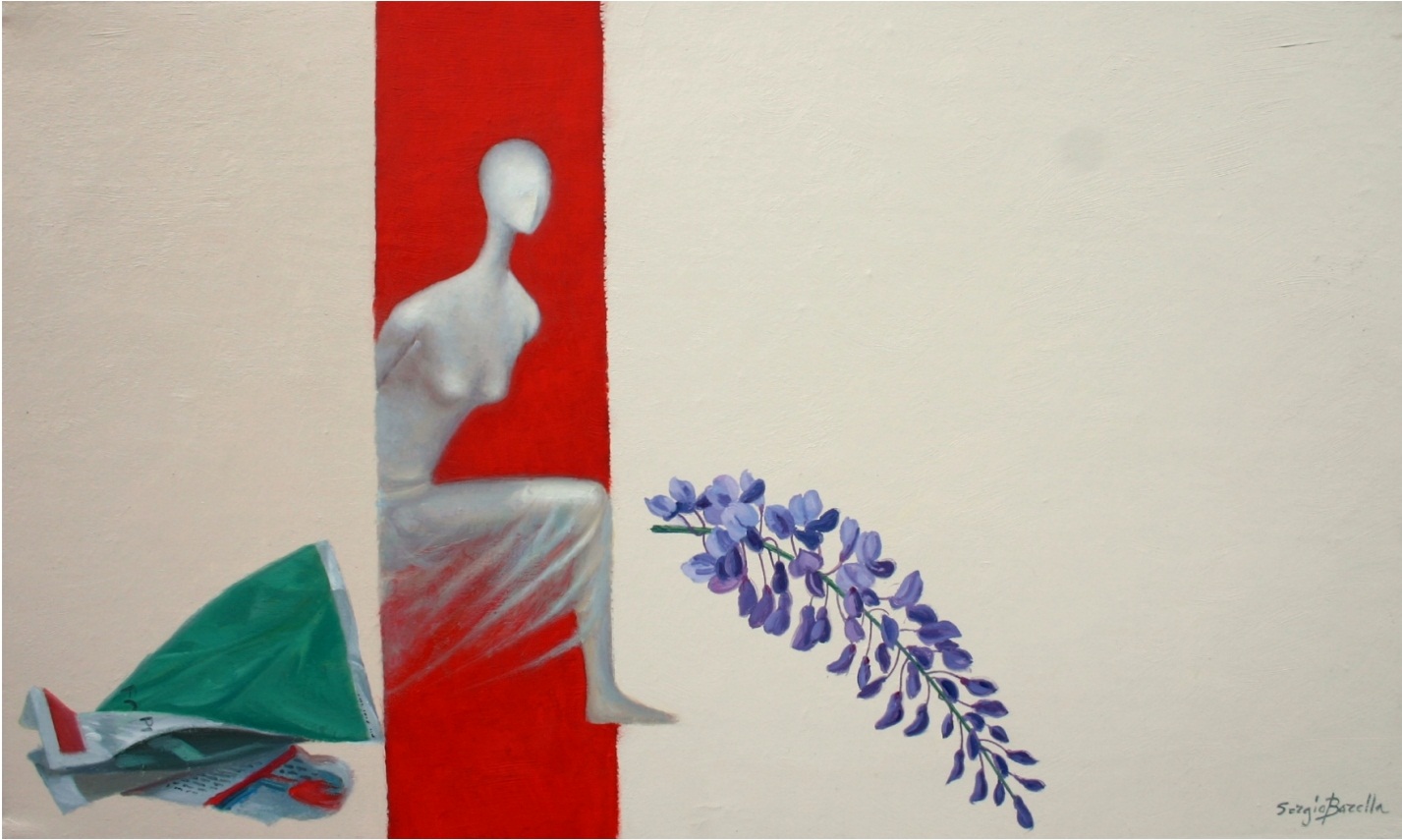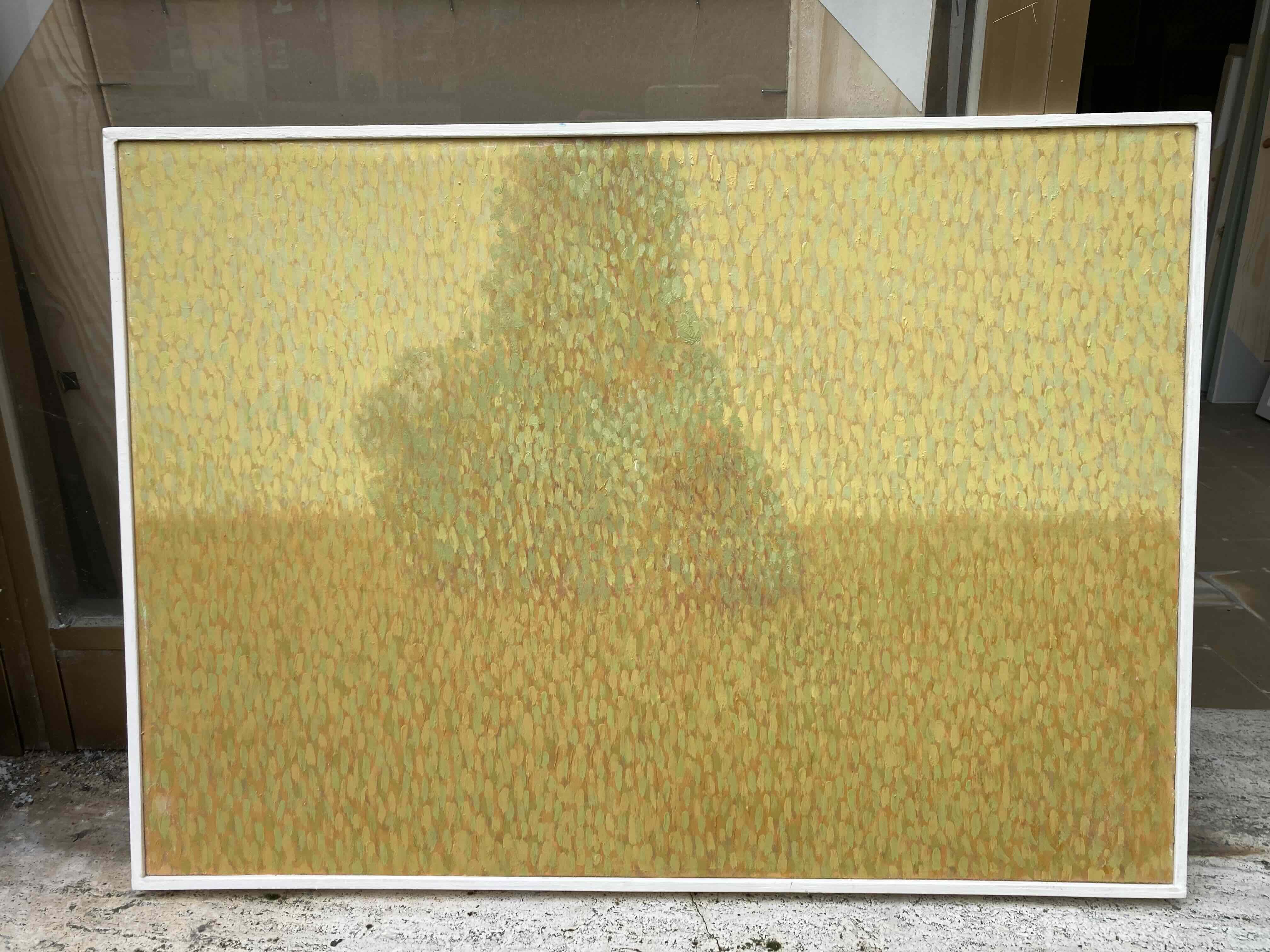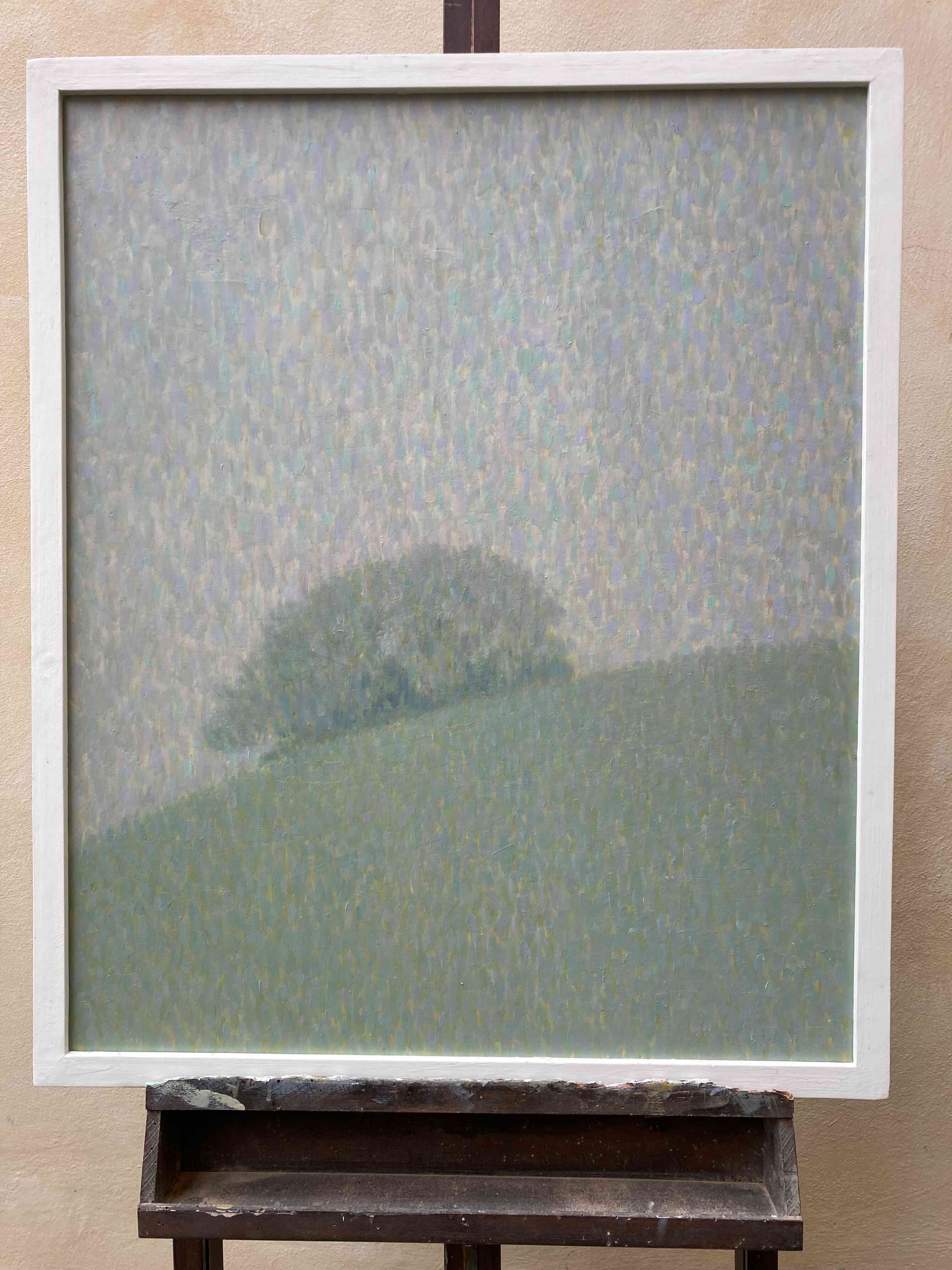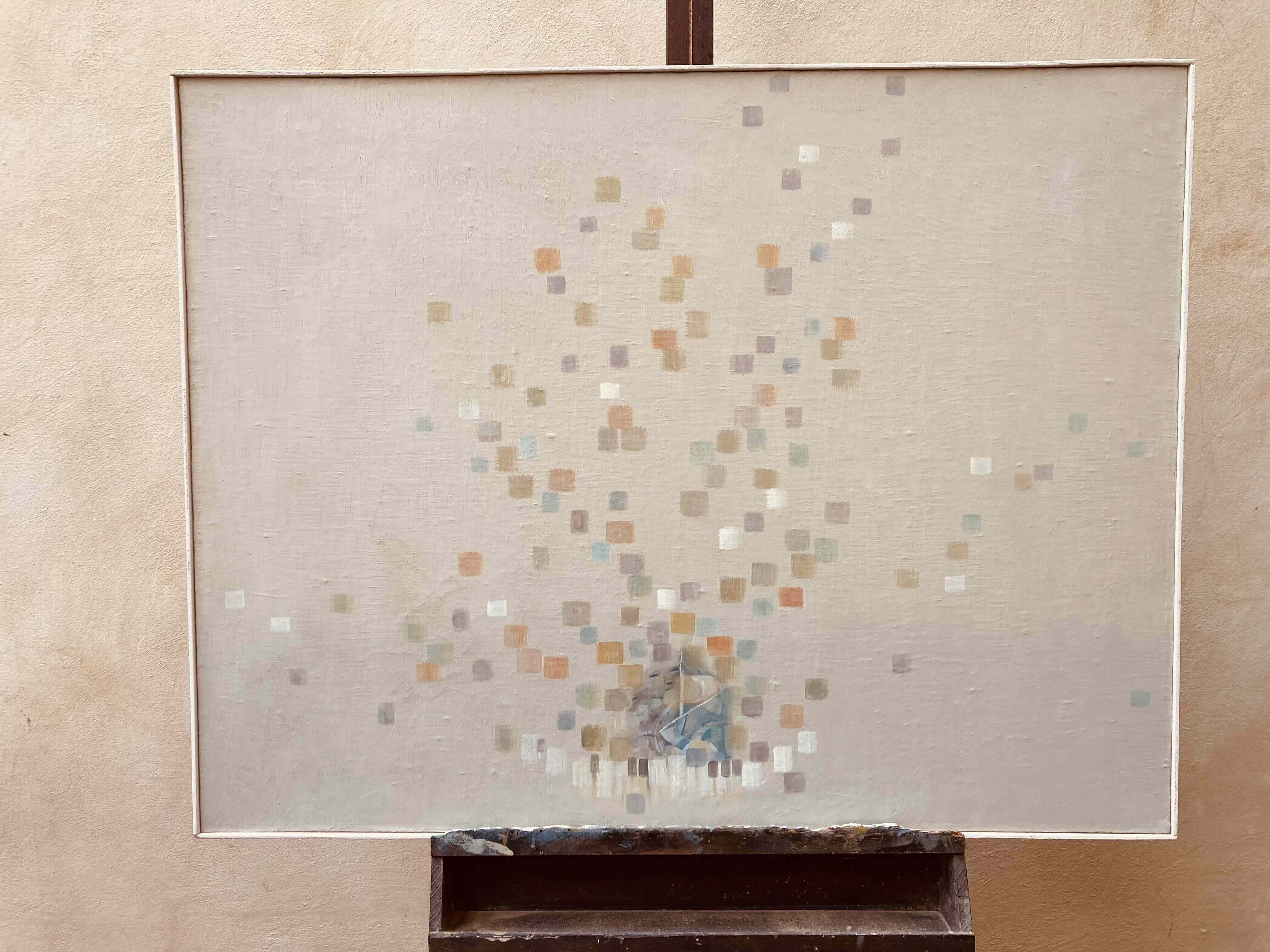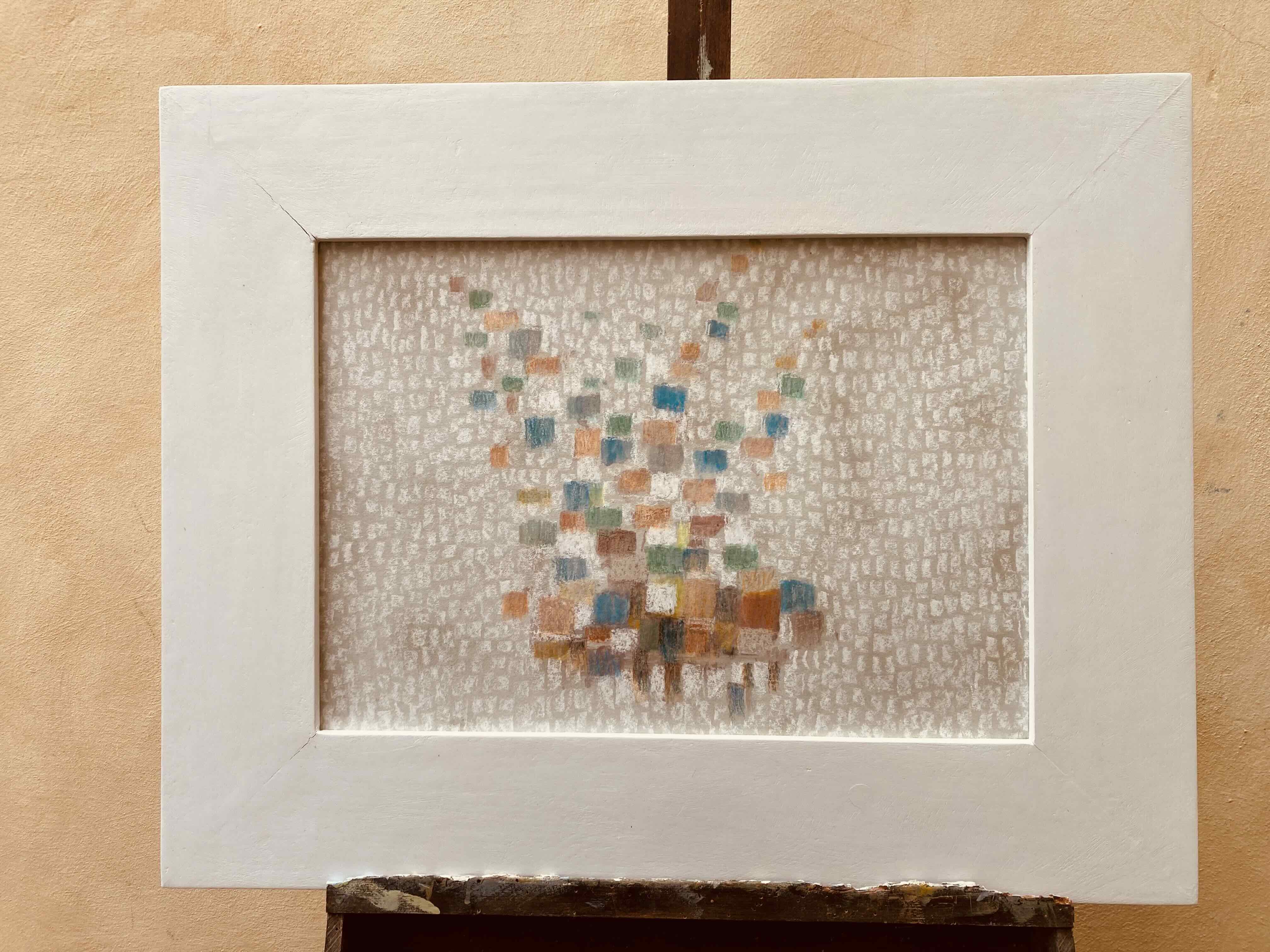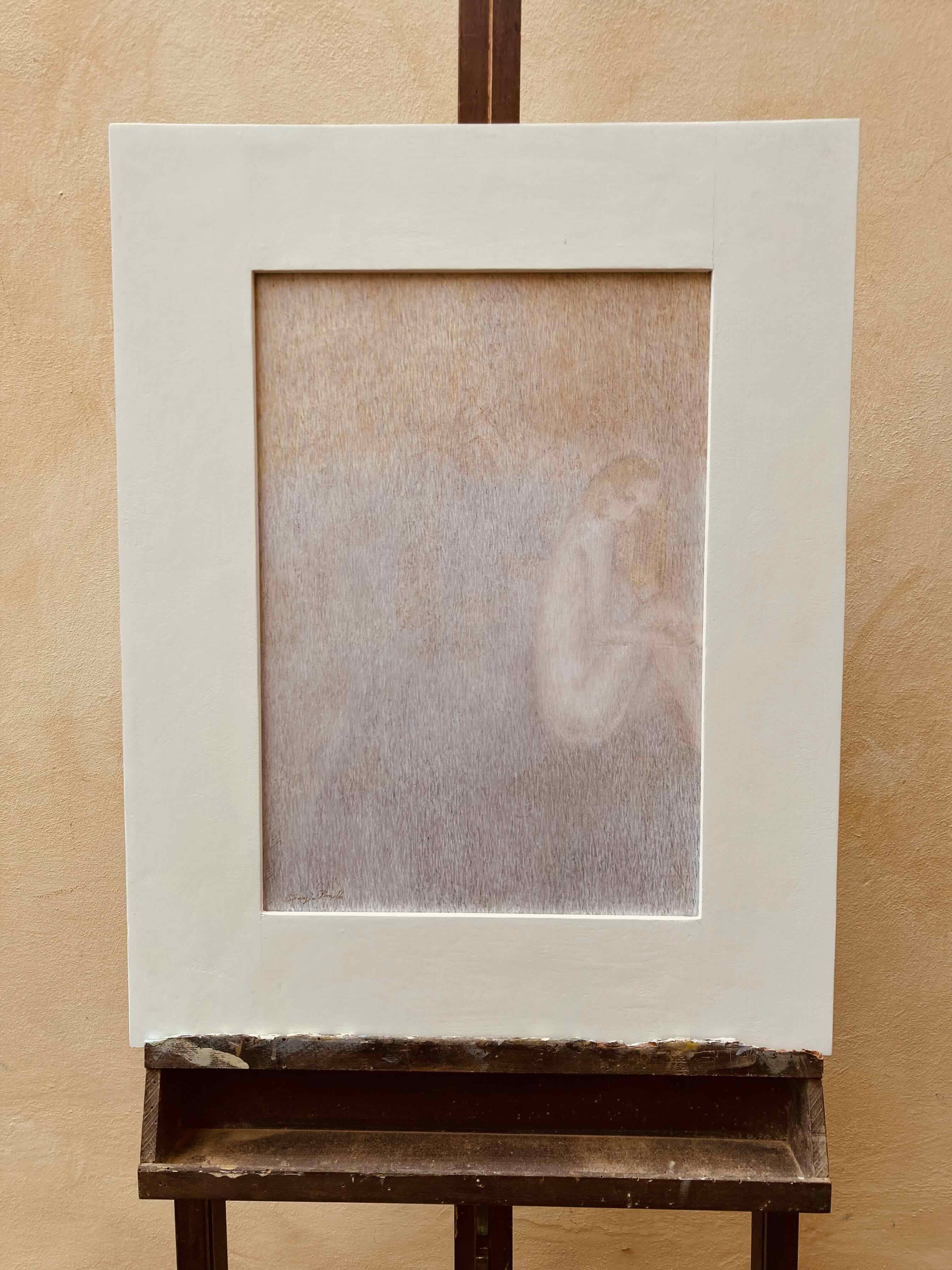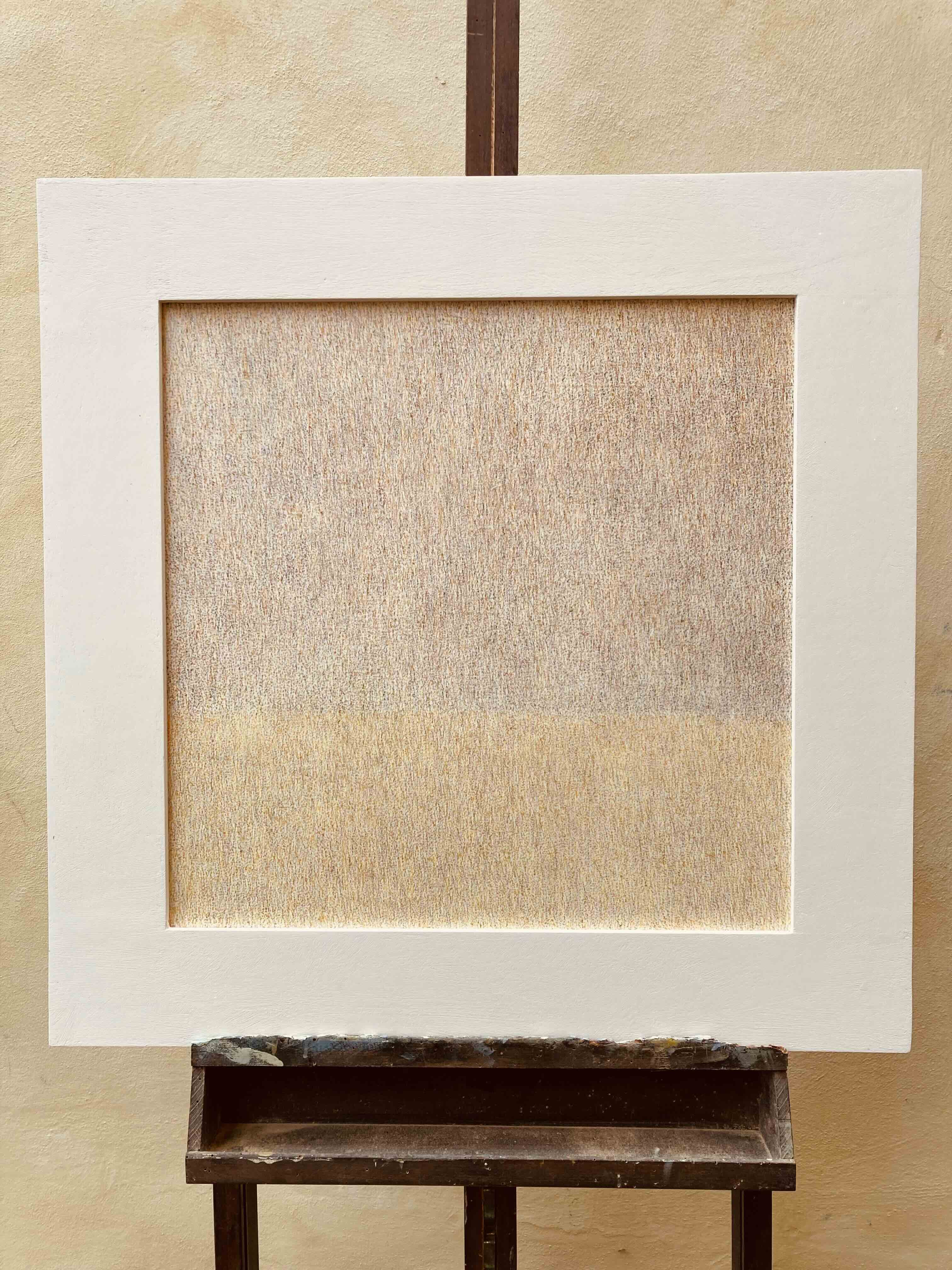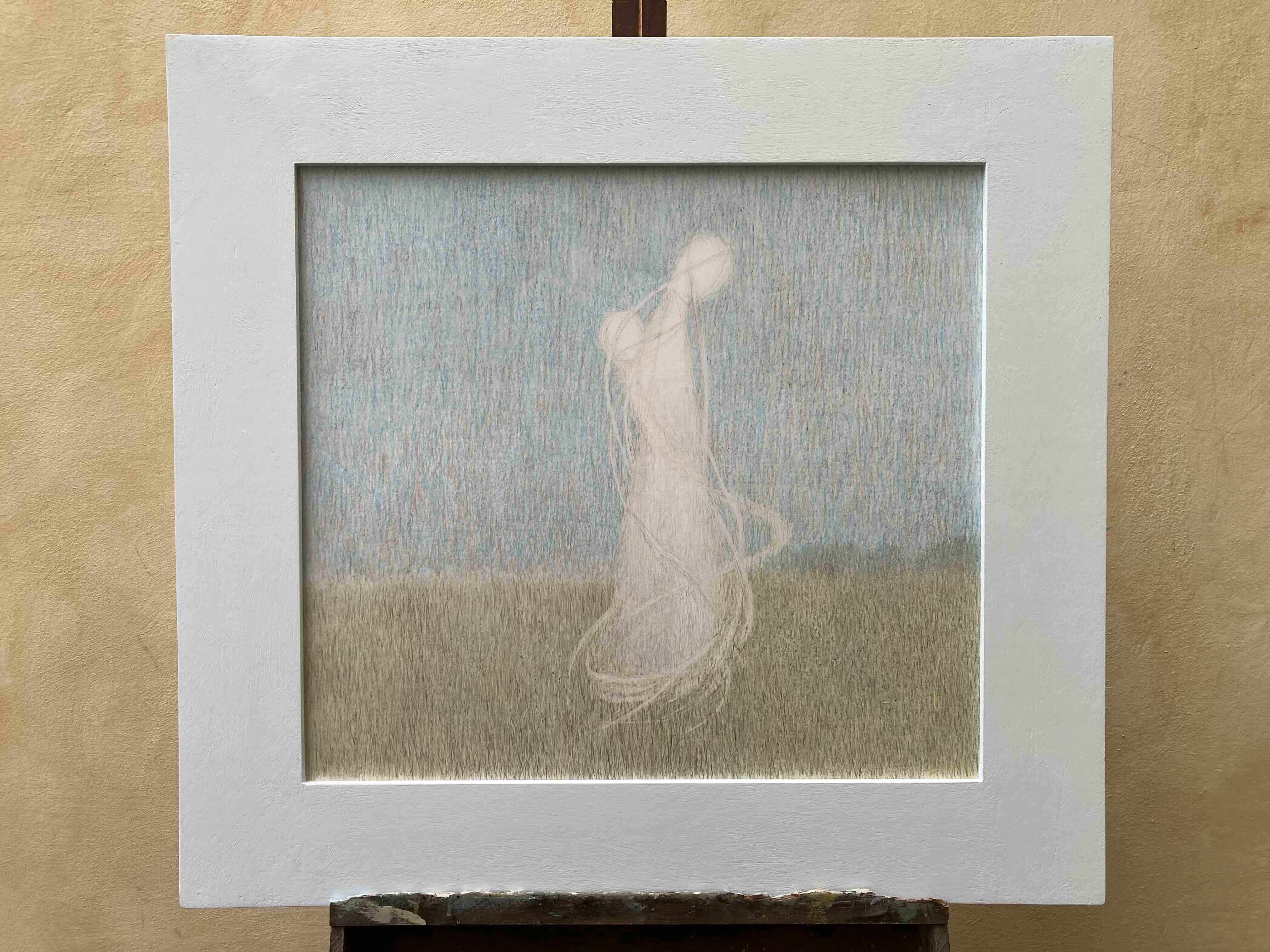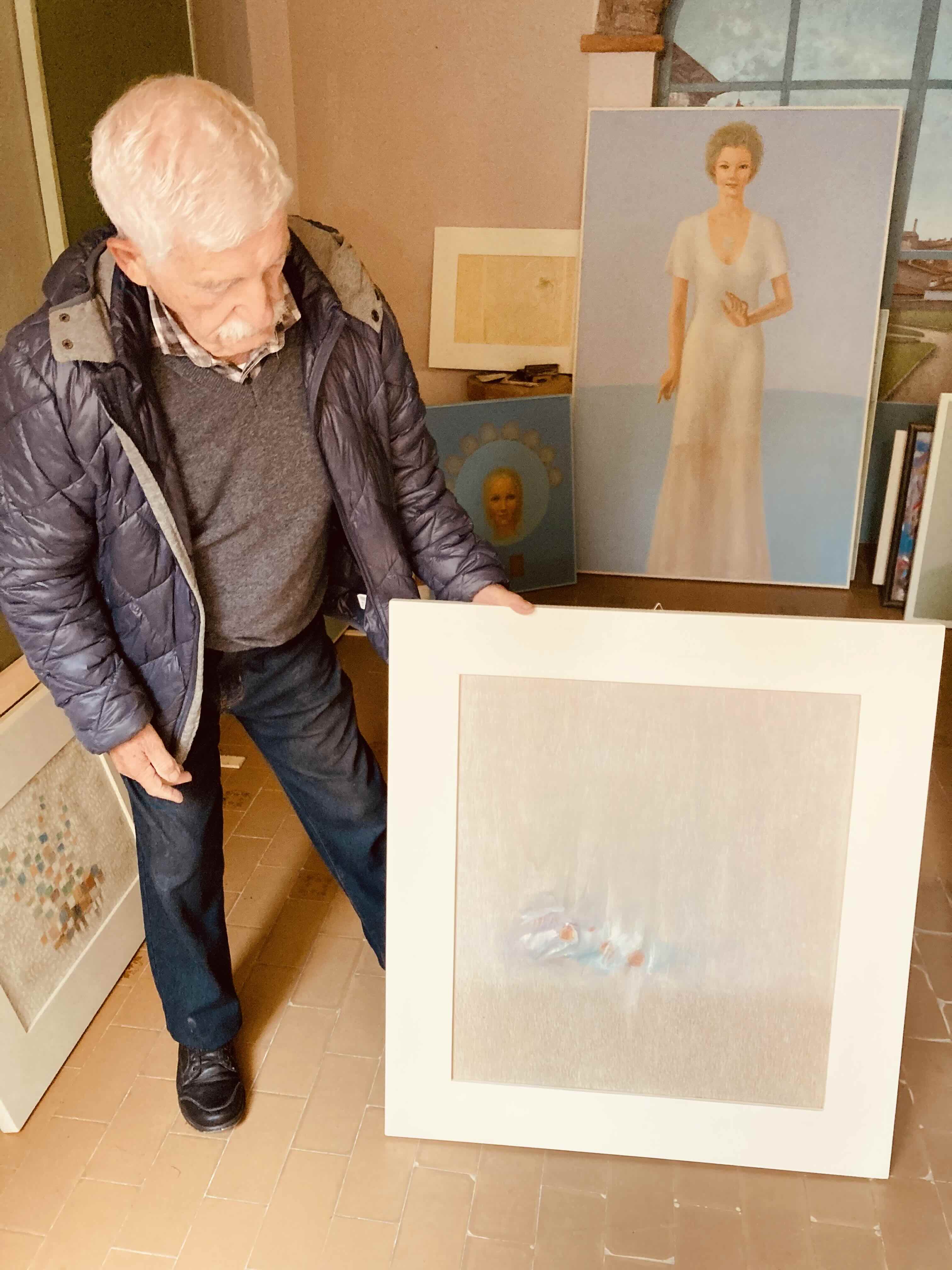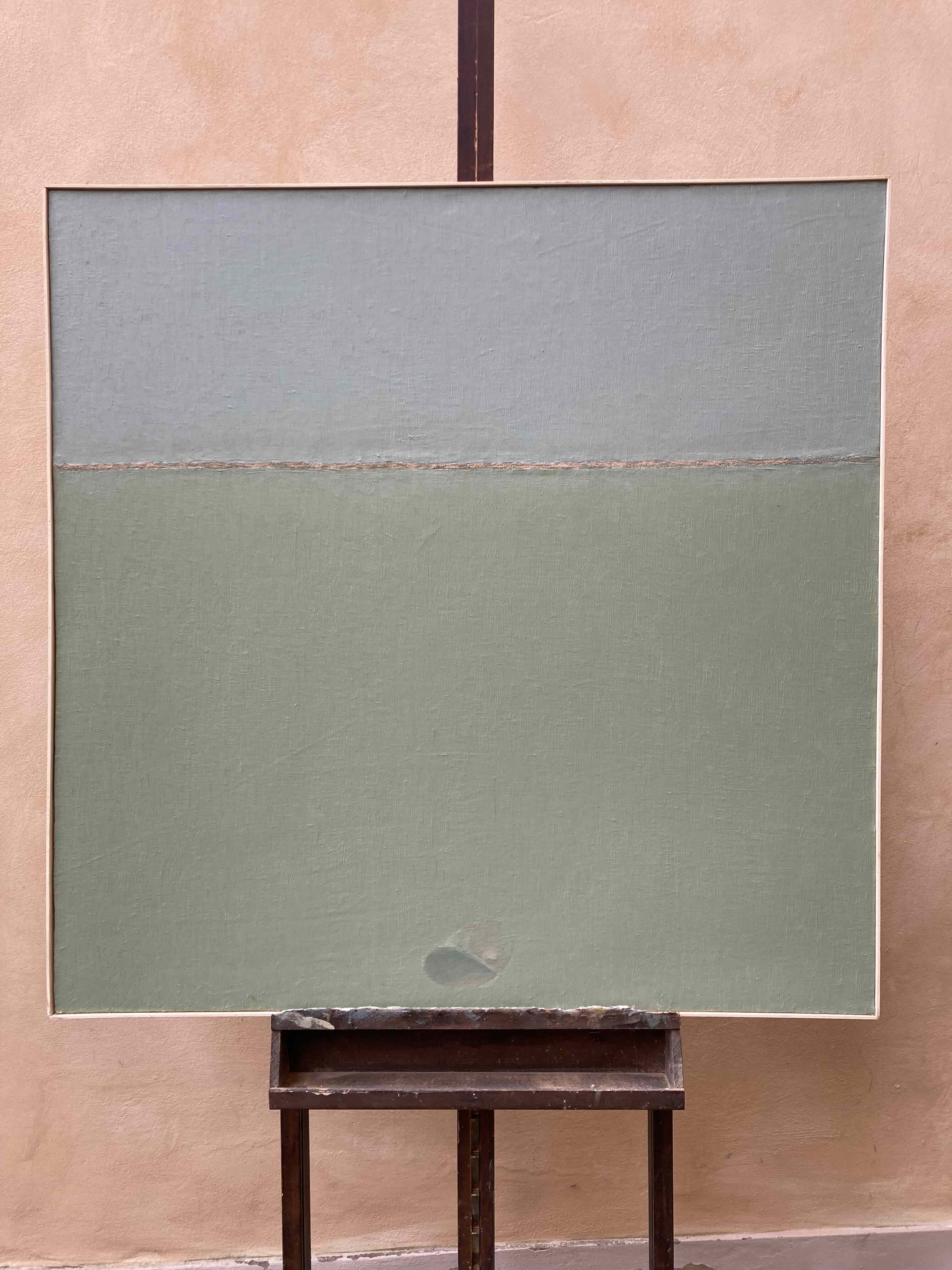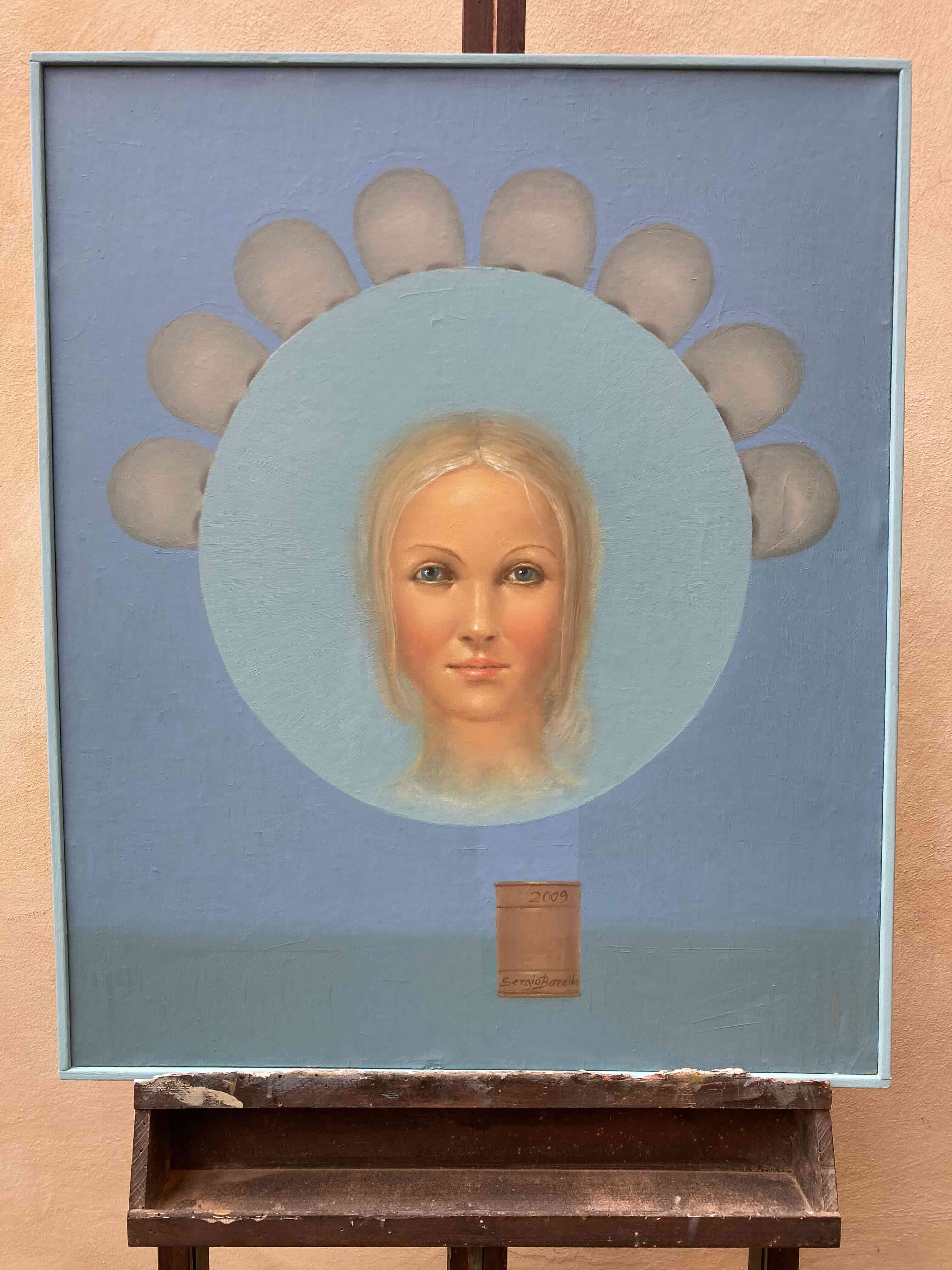SergioBorella.art
Information
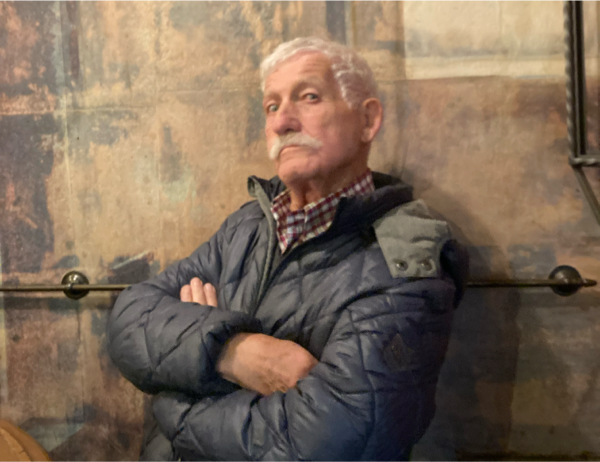
Sergio Borella
The sign of an "ecological" painter
Sergio Borella was born in Milan in 1939 and spent his childhood in Bore in the province of Parma. In 1950 he returned to Milan where he attended the Brera Academy. At 28 he moved to Florence where he had various artistic experiences: from informal to realism and abstract art. After his stay in London in 1973 and '74 he returned to Florence where the central idea of his ecological painting developed.
Name:
Sergio Borella
Address:
Monte San Savino AR Tuscany
Critical Review

Tommaso Paloscia
At a time like this, when the ecological conscience of Italians is awakening for a long time...
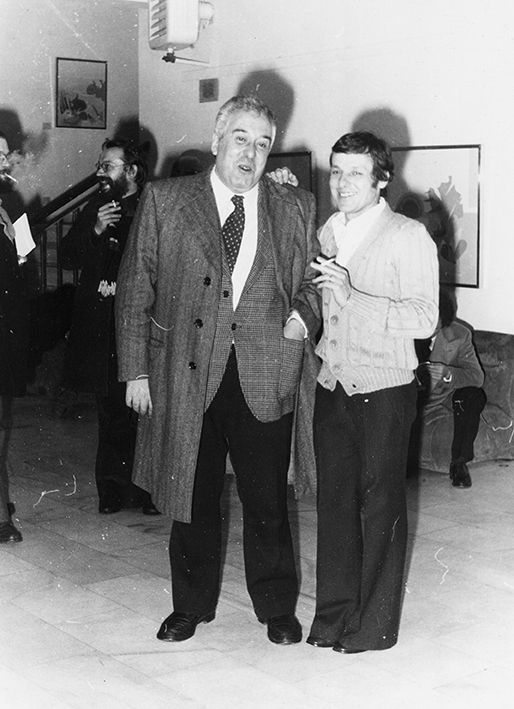
Dino Pasquali
Almost as if to subvert the "noble and poetic" choices - not always - made by the Flemish...

Claudio Gualandri
The environment is not for him the place to set up a home, but it is also the central theme around which all his production is revolved...

G. Tony Hoffman
Reserved, taciturn but genuinely nice, this is how Sergio Borella appeared to me, a painter born in Milan, like the writer...

Michele Loffredo
Michele Loffredo, art historian and critic, graduated from the University of Naples in History of Art and specialized at the University of Siena in Contemporary Art.
In the roles of the Ministry of Cultural Heritage and Activities and Tourism, he is an art historian official at the Superintendency of Arezzo, responsible for Valdarno and Casentino and director of the State Museum of Casa Vasari.
From 2002 to 2009 he was a contemporary art consultant for the Tuscany Region for the territory of the Province of Arezzo. Essayist and lecturer, he has curated more than a hundred exhibitions and numerous publications.
the ecological conscience of Italians
...symbol of the revaluation of the relationship between man and the environment

Tommaso Paloscia
Critic
At a time like this, when it awoke from its long hibernation, the ecological consciousness of Italians, painting by Sergio Borella is taken by many as a symbol of appreciation of the man-environment, ie a relationship that consumed by the degradation education and habits, has become the most dramatic reference to the humiliation suffered by the country's civilization itself. I would not, however, highlighting only the content, it diminishes the meaning or value of this painting is not and will not be advertising, and is not intended to transfer delegates to wave posters ecological ideals and battles in which you are connected, art but wants to be absolute and as such express different ideals: a language full of symbols, of course, but happily started to develop one of those channels of surrealism that tend to intermarry with the allegory. The finiteness of images, invoking the memory of traditional languages of Neoclassicism, the forced expression that add up to already clear enunciation language in which art - even if recovered, exploited and most familiar aspects of reality - it is eminently subjective denounce the complexity of preparation and training of Borella. (...)
And no cheating that painting is nice and apparently easy to identify and understand: it is a diaphragm, this perfidious that is interposed between the work and the reader. Breaking the stock to penetrate the words and reading the work unhindered deceptive means trying to grasp the meaning correctly. Which hardly coincides with the taking 'sight unseen' or (if this happens often painting) with being carried away from finalizing a noble perhaps, the only identification of contents. Borella, 'says' in fact many things that go beyond those objects accurately described in his favorite themes, and many other interesting they can express dell'evidentissimo beyond human concept of negligence, adding just the syntax of his language that requires flawless .
a ghost milky face connoted
not without countenance
...in this case the caricature of a dummy martial oblong like grasping a spear...

Dino Pasquali
Critic
As if to subvert the choices 'noble and poetic' - not always - operated by the Flemish in anticipation of their very famous and still-lifes, Borella takes to actors and / or deuterantagonisti of his paintings - the best of his compositions fed - an unlimited series, heterogeneous of material things and 'poor', rejected, thrown away, discarded, often found in cemeteries cemeteries 'object' and not at all ecological civilization of consumption. Are cans, stumps bicycles, scraps of cloth, ropes, belts, pieces of newspapers, logs plows and sickles (a monument to the memory of civilization?), Women's stockings, rusted metal and twisted branches and tree trunks withered (such as those that refer to the ground swell of the sea, or current of a river), polished and colored stones, torn shoes, and so on: in short, a succession of 'findings' without life, or who have ceased to have a purpose for human life. And between them runs from time to time (perhaps after quote from the work of Dali) a ghost milky face connoted not without countenance: in this case the caricature of a dummy martial oblong like grasping a spear, which Section remember the immortal figure of the knight born from the mind even more immortal Miguel de Cervantes Saavedra.
I wonder if some Knight is not one day do justice to the wastage and pollution that contemporary man commits against nature, and (un) consciously for himself, becoming spiritually viepiù similar to many scrap that can be seen around and on which the painting by Sergio Borella draws our attention, perhaps in the secret hope that it becomes meditation.
Reserved, taciturn but sincerely sympathetic,
so I appeared Sergio Borella, a painter born in Milan, as the writer, the day I was introduced by my colleague Claudio Zeni common.

G. Toni-Hoffman
Journalist
Reserved, taciturn but sincerely sympathetic, so I appeared Sergio Borella, a painter born in Milan, as the writer, the day I was introduced by my colleague Claudio Zeni common.
He was accompanied by his wife, sweet, intelligent (she also painter) apparently submissive and two sons both beautiful and wonderfully professional artists. Could not do much, having always breathed air saturated culture.
We have been talking about painting familiar and common friends and acquaintances. Perhaps the fact that they both come to Milan and Lombardy has helped a lot ... but it certainly was art in general and of course the painting that has brought us together now.
A dinner in his house made from a decadent country and made functional by a love of nature combined with the taste for beautiful things, showed us some affinities in common. I said love for nature that permeates the life of Borella ... In fact he enters powerfully staged the ecological theme. Although as stated Osvaldo Prandoni opening a beautiful monograph 'is certainly not the first that deals with this topic, of course, but he is easily cultured and humility, without the arrogant ranting of some who have chosen the 'green 'battle for their existence.
I have 'captured' images of his paintings, where the waste released into the environment by people who tried to burn the little time available to them, so unreasonable and disorderly, are presented in a surreal and hyper realistic 'as the natures death, but where he has placed a personal atmosphere (this is her trademark) which completes the balance of volumes.
Elements of the works of almost constant Borella are dead branches and roots twisted, deformed empty cans, paper and carcasses of cars, lots of abandoned paper - which I believe should indicate the mood of the artist's indifference to human today to the beauty of nature and landscape. Here I report some thoughts on Prandoni Borella: 'It 'a regret towards civilization Renaissance confirmed by the choice of a traditional painting style.'
I must sincerely admit you can win the battle against the degradation of the habitat in which we live, only with the cultural and social growth of man in the art of Sergio Borella can be a vehicle to raise awareness.
The environment is not for him the place to set up house,
but it is also the central theme around which is rotated throughout his paintings for eighteen years now...

Claudio Gualandri
Writer
The environment is not for him the place to set up house, but it is also the central theme around which is rotated throughout his paintings for eighteen years now. The more valuable, is its clear and positive living environment - external and internal, the surrounding landscape and the family - more space for hope in a better world can there be in the artist, and regularly inevitably characterized by unmistakable signs of decay, destruction and pollution, but not abandoned resignation. (...)
'I came away from London - says the artist - not to have more influences from other artists of the Brera to find my size. I love Tuscany and in '67 I moved to Florence. In '73 I stayed in London. Returning to Italy, just crossed the border, I felt a strange feeling of confusion for a month or two I found myself there. One night I dreamed that I painted jars because I saw them in the shoes always coming back home. It 'was a shock. An artist always tries something new, but it is very difficult to reach, for me, this discovery was a success and represented a breakthrough. One can be very good at painting, but more or less do things that other people are doing already, until he has something of her, I have a few satisfactions. ' He speaks and stands next to him on the stand the last work. 'Outskirts', where the contrast between environmental degradation and the hope of an improvement is given by the color, live on, intense to accentuate the complaint but also to emphasize that the light and stands for life and a desire to better tomorrow. Brunelleschi's Dome in the background, foreground looms a spray, a major polluters of our time. While Borella browse the catalog shows some of his work done in oils and talk face lights up and its proud mustache stands on end. 'This is the chase, here I got the inspiration going for a walk in the woods, I saw a sign prohibiting invested thousands of shots and I got the idea of a framework against hunting.' From a window there next you notice some classical music records and Borella immediately clarifies: 'For me, music is incredible art, I put on the first floor, because it can travel to the imagination in a way that no other art can do. When I think, not only music, but when I'm doing the painting becomes an incredible force. '
Still time to record the project to Don Quixote, hero of the modern environmental, and then leave. The front door is a sticker stuck on a programmatic admonition: 'Pollution is a fact, not only fight with words.'
Art can certainly play an important role in this regard. Sergio Borella has understood before many others.
Scroll through the thirty-nine paintings from the collection of Innocence
...sometimes disturbing but for the ability to evoke intense daily drop fell on the threshold of a metaphysical universe...

Michele Loffredo
Art historian
Scroll through the thirty-nine paintings from the collection of Innocence, painting by Sergio Borella it widens into a gallery of views of objects and familiar places, sometimes disturbing but for the ability to evoke intense daily drop fell on the threshold of a metaphysical universe.
These are images of still lifes artificial indegradabili waste, plastics, papers, posters, cans, detergents, etc., but also leaves and branches, gnarled stumps, rocks and dried flowers. Wrecks human wreckage beside natural, combined with a sort of complicity common kind of symbolic exchange as well. Abandoned things, worn and no longer useful, but still endowed with life and offering resistance to enter the last room of memory, that of oblivion.
The reaction to the contemporary consciousness lethargy and indifference toward life, in whatever form it occurs, natural or artificial, leads the artist to claim their role, to make the work resulting in expression of their feelings.
And 'then a picture of testimony focusing on critical issues related to ecology and environment, supported by a rigorous painting practice of classical and non-academic figuration, which derives from a consistent first choice of life and then recedes in the activity 'artistic reaching in scope, more recognized, as 'painting' cleaner.
Of course, this reading is required immediately to our eyes, standing out on each other interpretative hypothesis. The centrality of the predominant message is relevant, but I think it is this dominance that must lead us to suspect, to ask what the deeper meanings, such as paths for the artist will guide its distinguishing features, which are the roads leading opera to achieving a comprehensive survey.
Indeed, the ecological aspect must not overshadow other voltages, such as painting, where we can come to understand more subtle truth, the only ones to give value to the untiring search of the artist and man, of which art can be effective.
So if the work of Sergio Borella may seem easy to conquer is evident even at first reading, which hides an impression of outstanding, a reminder of a condition which certainly goes beyond the simplistic label of the complaint clearly label for camp in an observation relations and the essence of things, the incessant flow of time, on our role in the universe. Always, the fundamental questions of art, here called a cosmic dimension of existential problems.
Sergio Borella was born in Milan in 1939, spent his childhood in Bare, near Parma in 1950 but is back in Milan. In Milan he attended the Brera Academy, led by Lucio Fontana from 1957 to 1960. Soon after he started working as an illustrator, joining the Firm Dami, among the largest in the industry. A twenty-eight years he moved to Florence, alternating activity of an illustrator than a painter.
Florence performs various artistic experiences, experimenting with every technique and style, from bush to informal, from realism to abstraction, trying different paths with constant discipline.
To pursue a career as an illustrator, he moved to London where he worked for major publishing houses in Europe. Stay in London had the opportunity to deepen its cultural baggage, but in 1967, returning to Florence, where the mature central idea of his painting.
When crossing the woods around Bagno a Ripoli, where he lived and observed the first signs of degradation, the first open dumps, waste scattered around the green, pollution spreads, already fresh confrontation with the most educated England. That 's where he conceived a painting that is also civil commitment, not only linked to the market or looking for the jet set artistic awards, but who could take on real problems and urgent. This choice has answered the need to finalize the artistic practice and has to rediscover its identity as a man.
After a brief stay in Varese, Borella responds again to the call of Tuscany, moved, permanently for the past two decades, in the quiet of Mount Sansavini. And there, among connoisseurs and art lovers, Giuseppe and Claudio knows Innocence, father and son, that become popular collectors of cycle of works ranging from 1974 to 1994.
Understanding of art is not innate, is innate sensitivity, the ability to be able to move to a message, to live in communion with the art world. Art lovers and considers this a core value to make life worth living. The relationship created between artist and collector is a magical moment. The collector is a truth because he was looking for the artist because they can give it.
Borella is a shy man of few words, but knows how to listen. Knowing one has the impression of a calm and methodical person. Instead, his painting is indomitable and declares that intimately share of his time.
In fact states 'In my paintings harbor the conviction of my ideas, my personality, contrasting the beauty of nature with ugliness of our society, ugliness caused primarily by human rudeness and indifference.'
Borella for the relationship with art has always been marked by the total clarity of intent. It serves to express ideas, ideas of non-approval, opposition to consumerism now theory and practice in the world. It also has considerable capacity for dialectic, but you can reduce it only to achieve aesthetic vacuum of values of testimony and participation.
The artist tries to disappear behind his work, which remains the real essence of his thinking and his work, there is no need for anything else, because the communication is lost collective experience. So as to provide a painting that speaks to all, and where, as one critic had to say Milan, 'It is the first time that I do not read the trace of a painter. '
Sergio Borella is satisfied with the ability to reach not mark any apparent trace, not professing the virtuosity of the original personality, enough to recall certain experiences of oriental art where the artist cancels his personal stamp, to a universal language governed by tradition.
Thus, this assumption of an impersonal role, becomes the best trick for the artist Savinese fact responds well to his alleged discovery behind traces of human degradation, the great absence is the very man.
This absence weighs like a sword of Damocles, the balanced composition, harmony of volumes, the expansion of color, all rendered in neutral objectivity, minimalist. Weighs the pictures and visions of what our age has bequeathed an observer to the distant future. Man, when it appears, is almost always archaeological, dummy marble or fragment shown.
Sergio Borella not camping in the general complaint, like many who embrace the green protest, but is supported by an expressive syntax aware, the landing at distillate masterful artistic genres and languages that the author had the opportunity to experiment.
Several contributions have already noted that his painting relies on suggestions from Surrealism and the Met, but we must also emphasize that there is a programmatic determination that drives him to work in this direction, but the result of work drawn by other means, that of Still Life. In fact it is the need to build a different set of objects and visual tracks, cover under the terms of still life, which constructs the event alienating eco surrealist. Moreover, the conciseness of the representations that determine implacable metaphysical atmosphere, static and mysterious, is controlled not to yield to the seductions of painting hyper, it is not cold camera, but certainly sensitive to the records of illustration, illustration of the great American first of all Norman Rockwell painting in which some, such as weekends, which fits.
If we find solace in art forms and references could then ensure that the scope of Still Life.
Also stands out, with disarming directness, the aspect of the transcription not only of the great lesson of a genre that has found significant events in the seventeenth century, Neapolitans to the Dutch, but also the reappearance of the teachings of purism.
A cleaning and painting and then characterized by simplicity, reminiscent of distant connections, but united in a synthesis strongly allegorical, also scrutinized in a fantastic condition timeless, protected from change, and that only an enchanted look allows us to penetrate.
We are fully screened in another symbolic dimension. Objects, objects and figures lose their natural measures. Gigantic flower petals and tiny mannequins talk at close range with Ionic capitals, topped with broken bottles, plastic scraps of burned paper and cord. The objects seem to take on new forms, which had not seen before, take on strange characteristics that make them look exiled inhabitants of a parallel world that feeds on nostalgia.
He puts real figures in unreal-looking compositions. We have met the classic rules of composition, the objects are arranged with sagacity spectacular live on a small stage where performers such as a melancholy drama. A scene from the bottom fleeting, unstressed by curtains, which give relief to buildings in the foreground characters.
Raising balances by dissonance, contains the remains of an unusual world, archeology of the present reveals that the artist took and not a deep knowledge of the rule of his craft and make art.
As the theme of still life is the thread carrier, the scenes are never repetitive, there is an incredible variety of performances. The artist does not stop on thin objects, but is exploring the world, is experiencing its guises, from cans to open pages of magazines, from dolls to rubber shroud of paper, remains of carving tools to farmers, returning that who we are.
His eye observes everything from a detached perspective: in their finding of zero degree, industrial or natural that is, one does not override the other, only a magical randomness of fate, it seems that some element prevails, and to give meaning to the title composition, in fact all things live a life of equal value. Nothing surpasses the other, all as they are to resign the same kind of relationship with the world: the refusal.
And it is the refusal understood from all points of view, Borella puts the center of his poetry. And 'intuition that allows him to objectively make the products of this company, without any intervention other than to collect and represent many different things, like the world has forgotten. But these images become garbage under his hand, highly esthetic portraits, pieces of memories, fragments of memories, fragments of stories, signs of past lives.
Collecting images of interrogative visions, dialogues between dumb things, they delivered a masterly painting figurative, from warm or cold, but still muffled, or dawning twilight skies favorite camp where these taciturn performances.
Indeed it seems that the master is the silence, a silence that hovers memorial in a kind of modern Et in Arcadia ego, where are disappearing all the attributes of the classic rural representation, replaced with current findings, but the warning remains intact on the vanity of the world and the precariousness of existence.
A painting, then, living residences philosophical high, for a testimony that originates from the individual to indicate a universal hope of salvation.
To score almost mystical asceticism, pervaded by a feeling of spirituality that lingers on the figure, returns works in a kind of sacred painting, as secular objects are represented.
Not only shattered myths and utopias wrecked, but also faith, the one entrusted to their ideals that they see every day, focused on itself, to prepare the canvas, apply the funds to the color, soften the tones drop veils, feather , painting his time.
Portfolio
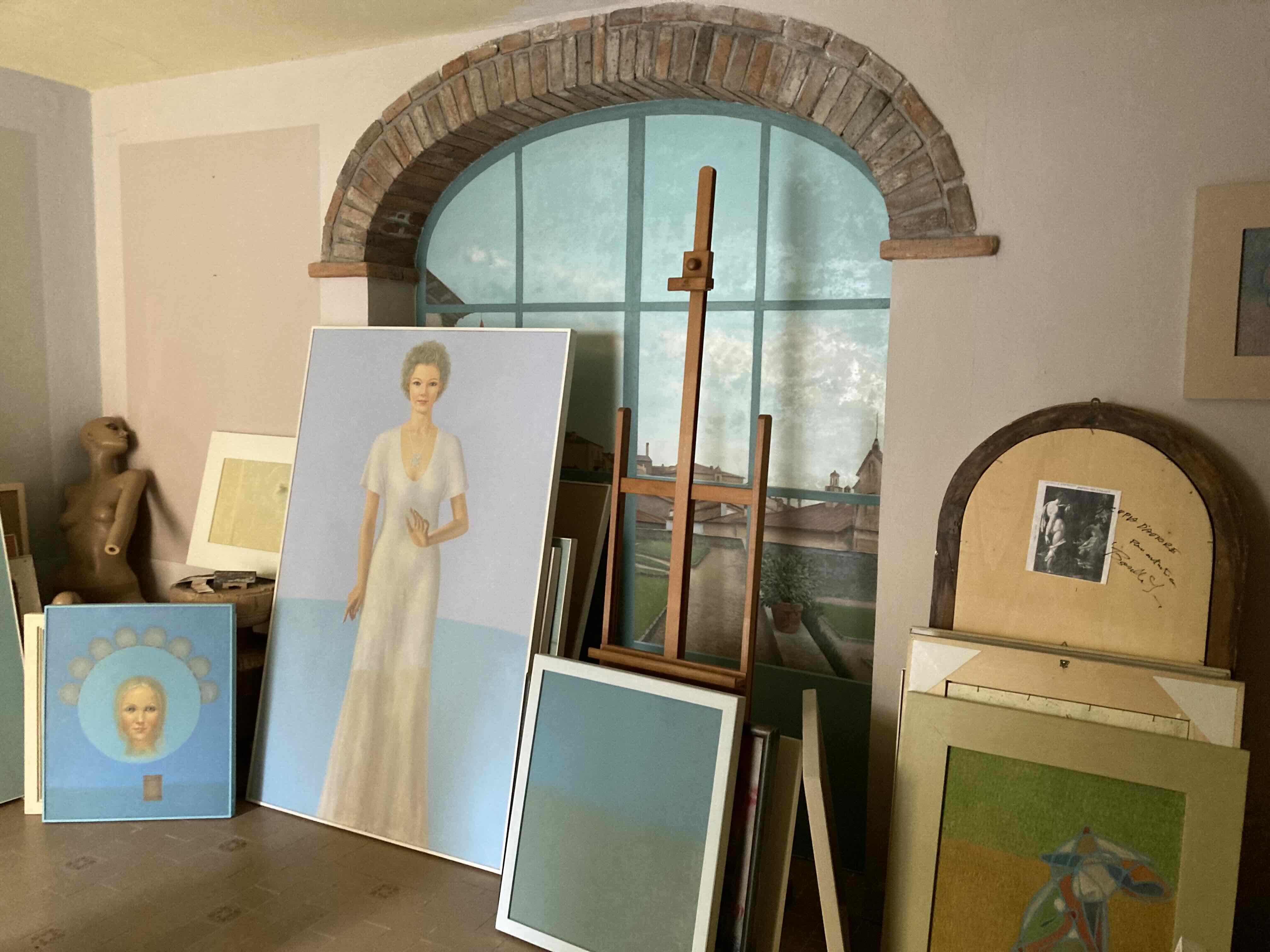
a "project" dedicated to the present and the future
MONTE SAN SAVINO – Waste, plastics, papers, cans, and together flowers, leaves and branches. Artificial objects and natural objects, for a painting that also becomes reflection, commitment, denunciation. These are the works of Sergio Borella, a Milanese artist, from Arezzo by adoption.
The Project, “The sign of nature” offers ideas towards attentive and civil behavior towards nature. The idea of an "educational project" was born from the desire to make future generations aware of the ever-current theme of ecology understood as respect for nature.
The artist's hands

Testimonials

What you feel when you squint under an oak tree in a forest in Tuscany is like what you feel spending a day in the company of Sergio Borella. Among his paintings and his colors, there are sensations, emotions and hugs typical of a landscape that leaves you breathless... like his works.
Giuseppe Testi | CEO di una Start Up

Whoever comes to my restaurant is immersed in the pictorial expression of the raw materials which on a kitchen table become alive until they are transformed into what we see and naturally "eat". On the walls there are only Sergio's paintings, adding to the sensorial experience, also the emotional one of those who observe them. Thanks Sergio..
Roberta Mancini | Proprietaria del Ristorante il Castellano

I met Sergio in an educational exhibition organized by my University and I was struck by what Art can still give to the new generations. I am grateful both to have met a true artist and to be part of that generation that will bring the environment into the 22nd century with the attention it deserves..
Stefano Mazzoli | Studente dell'Università "La Sapienza" di Roma












